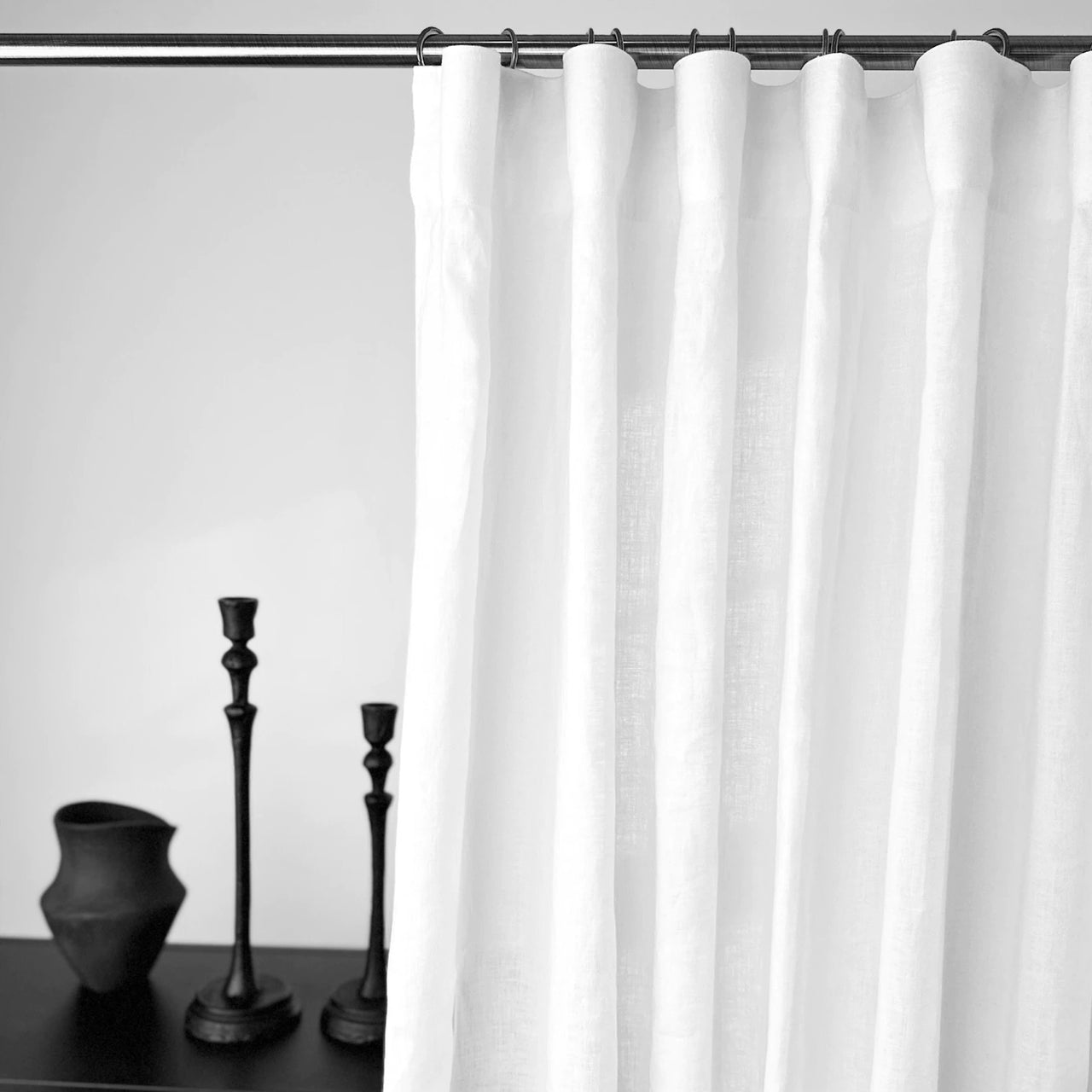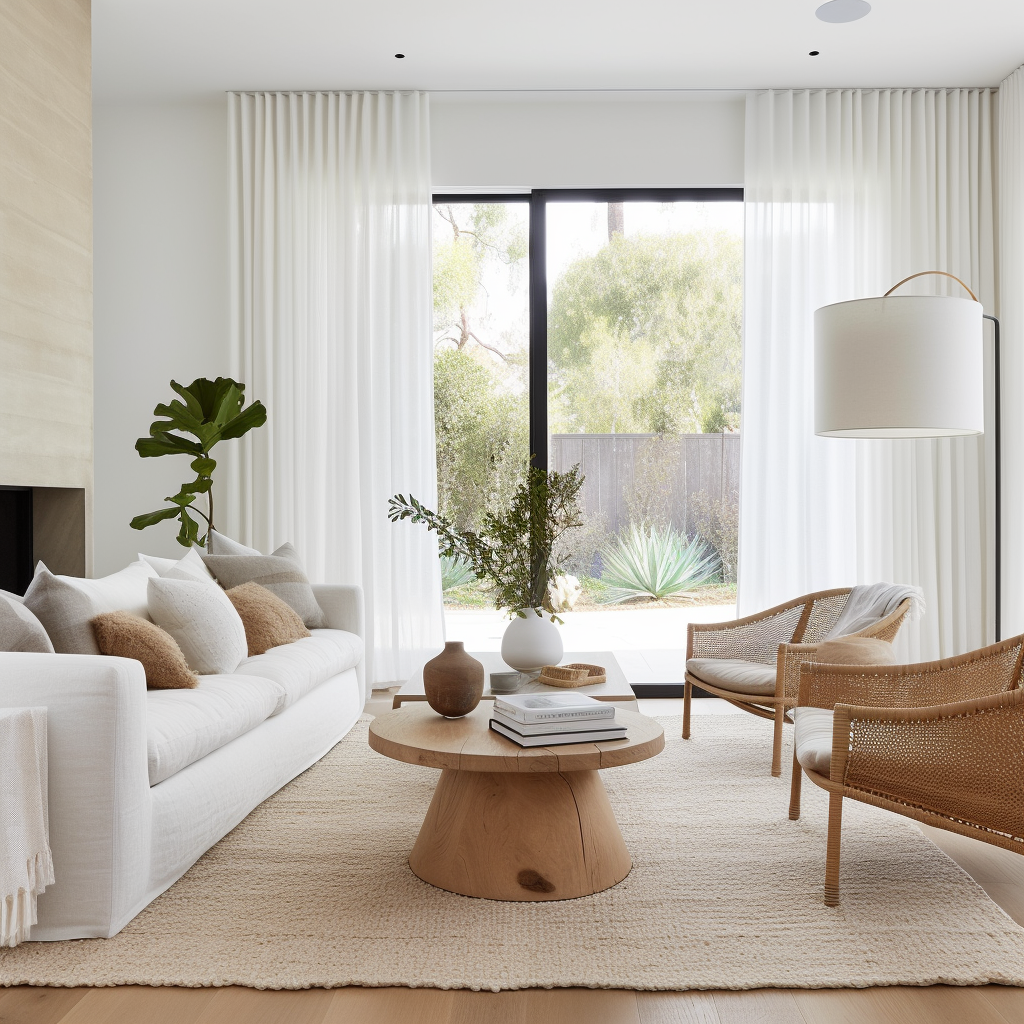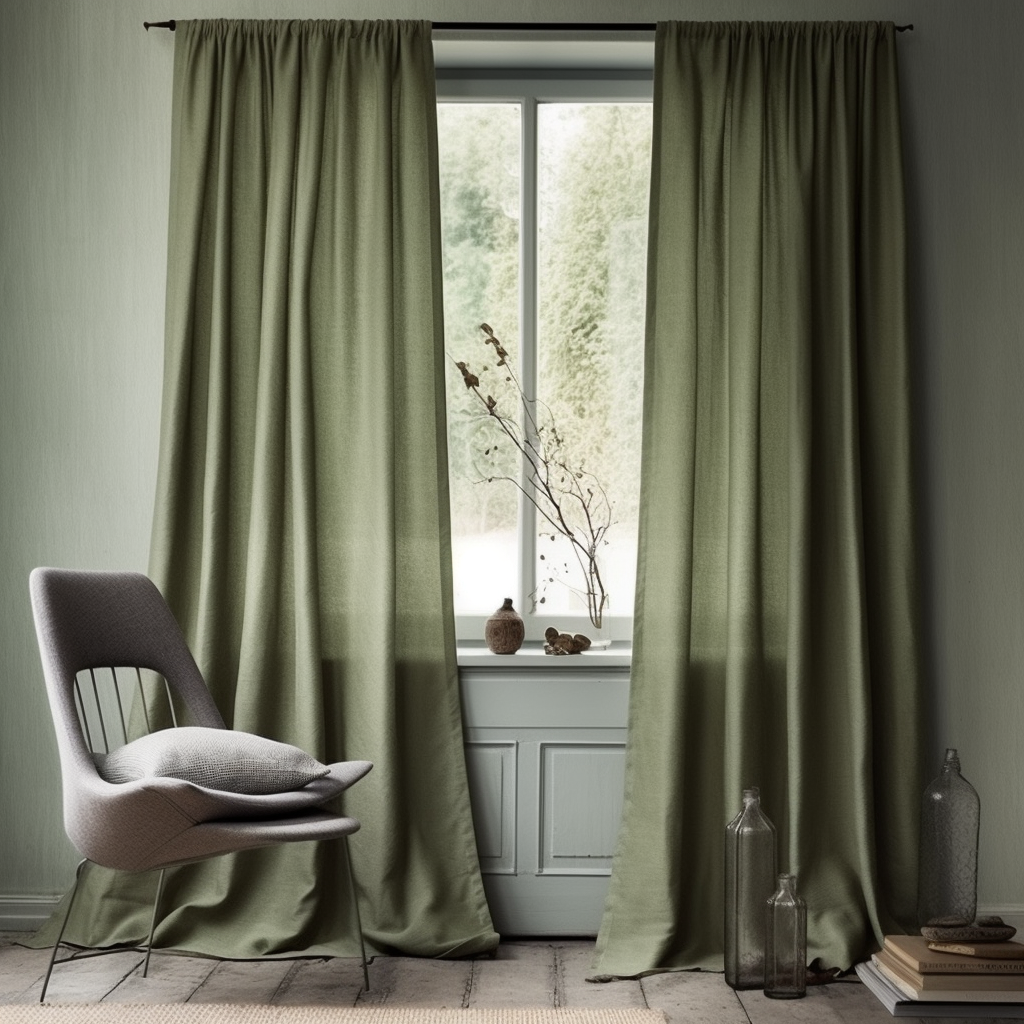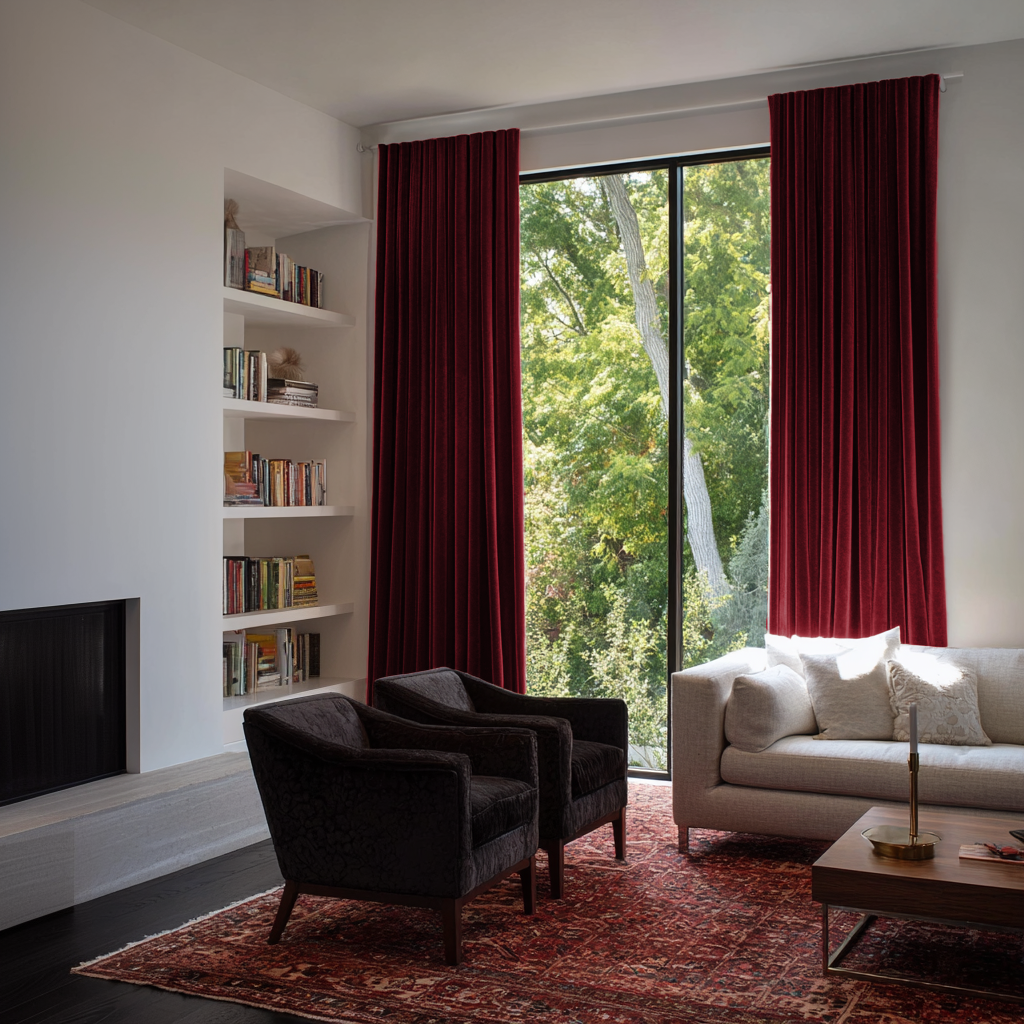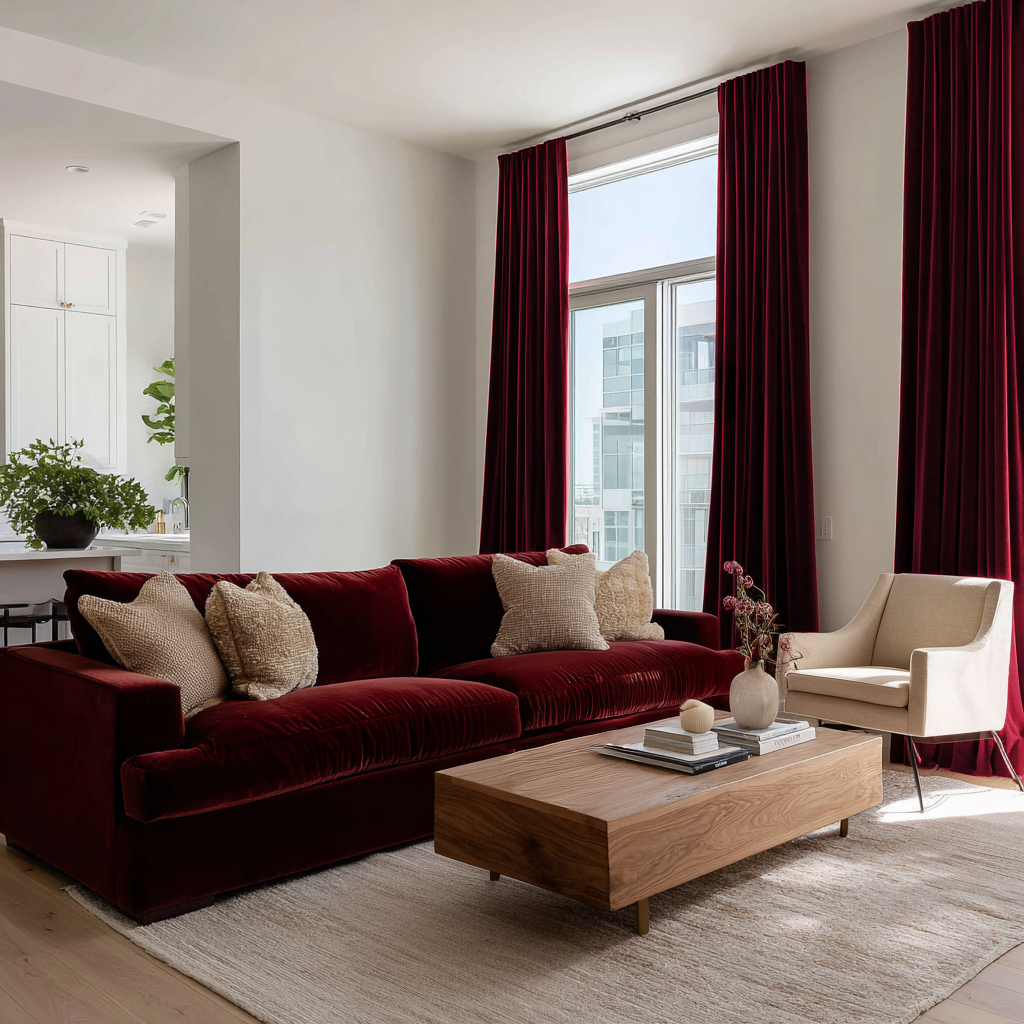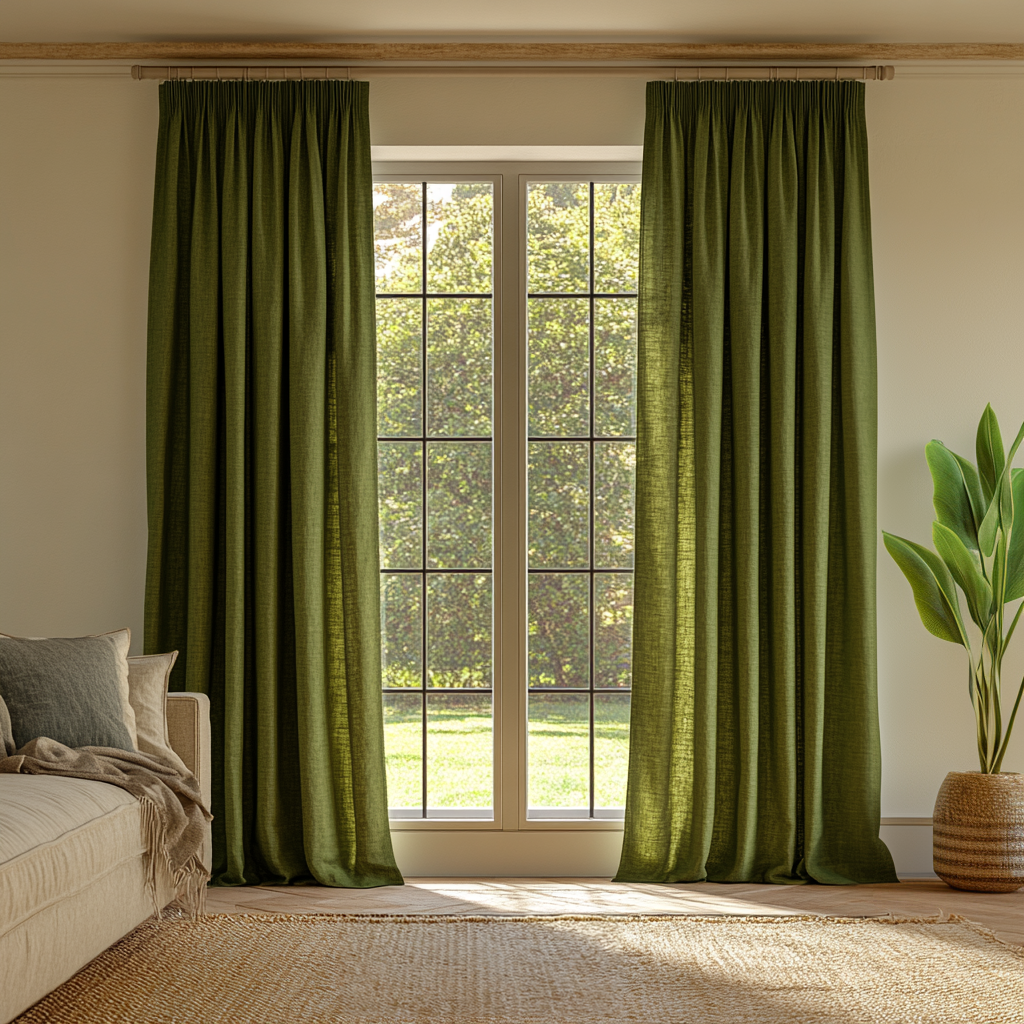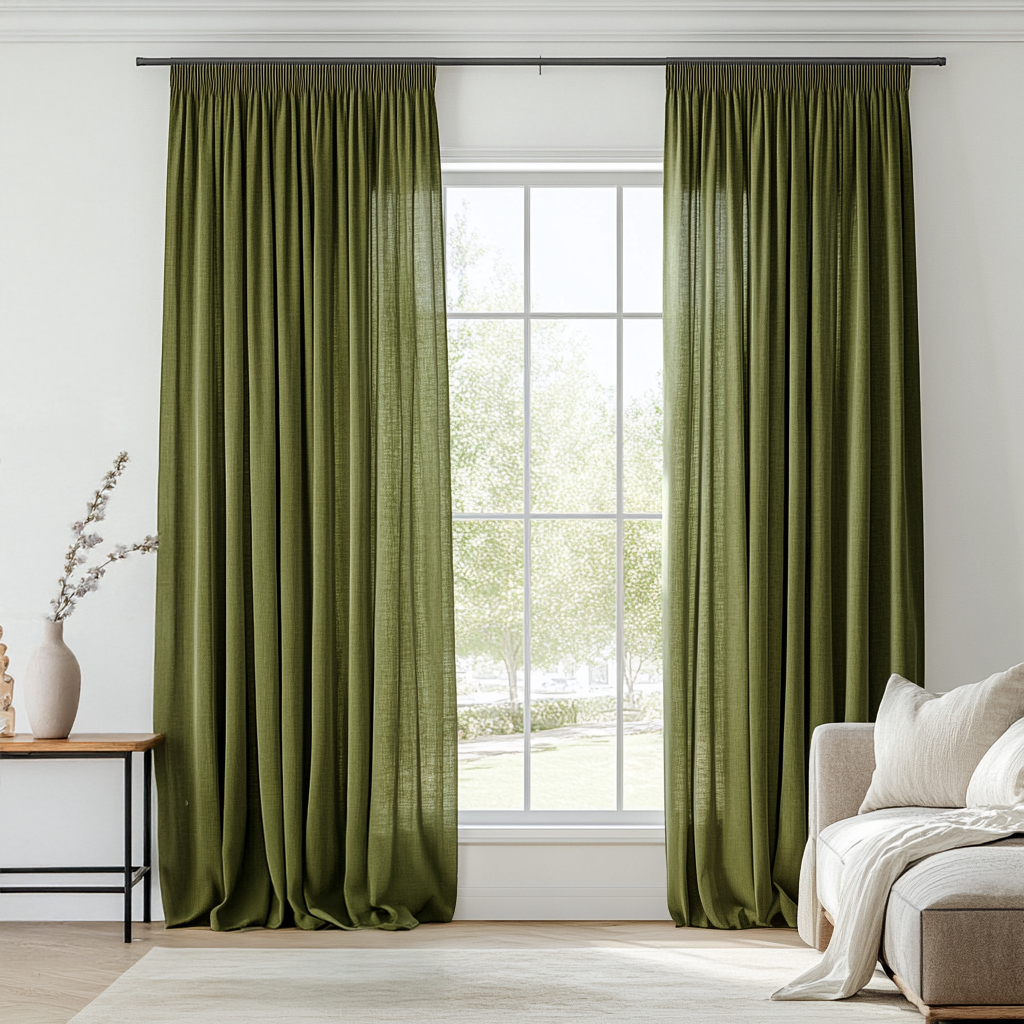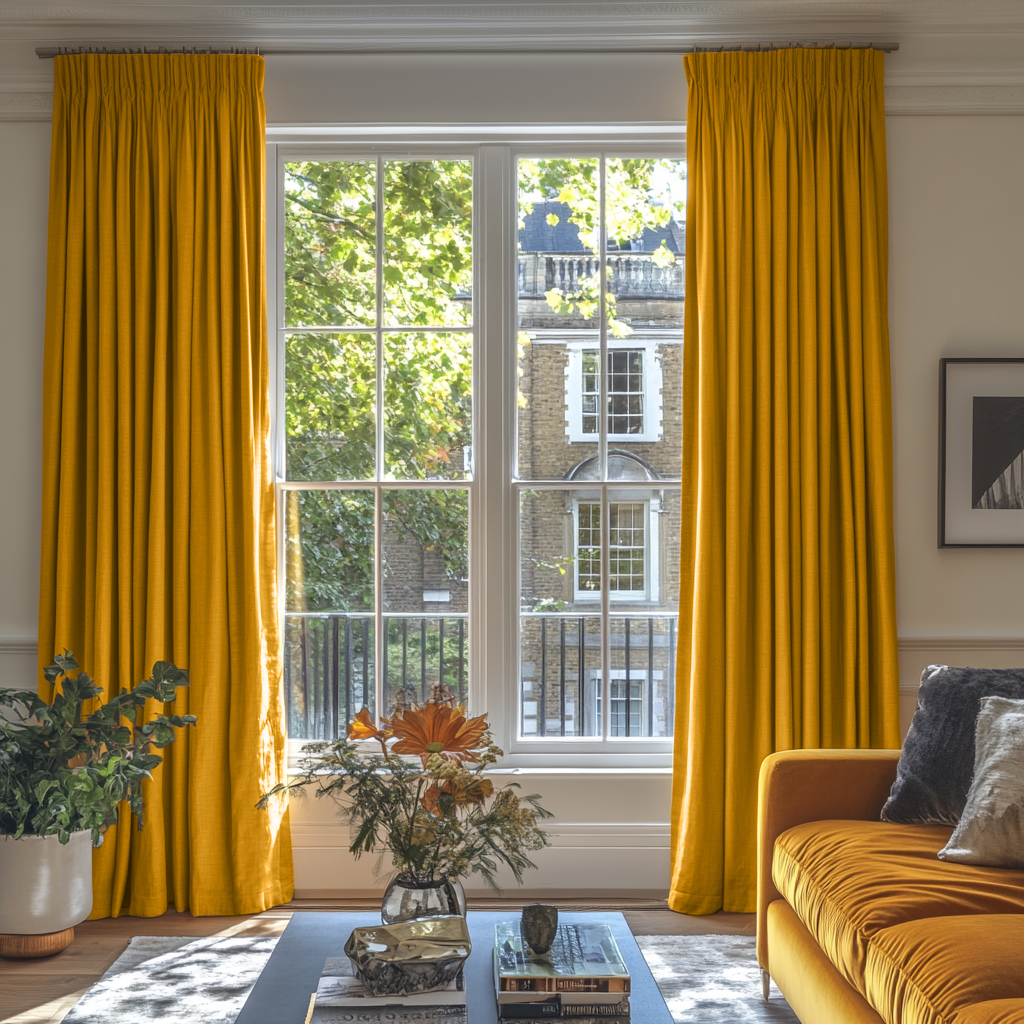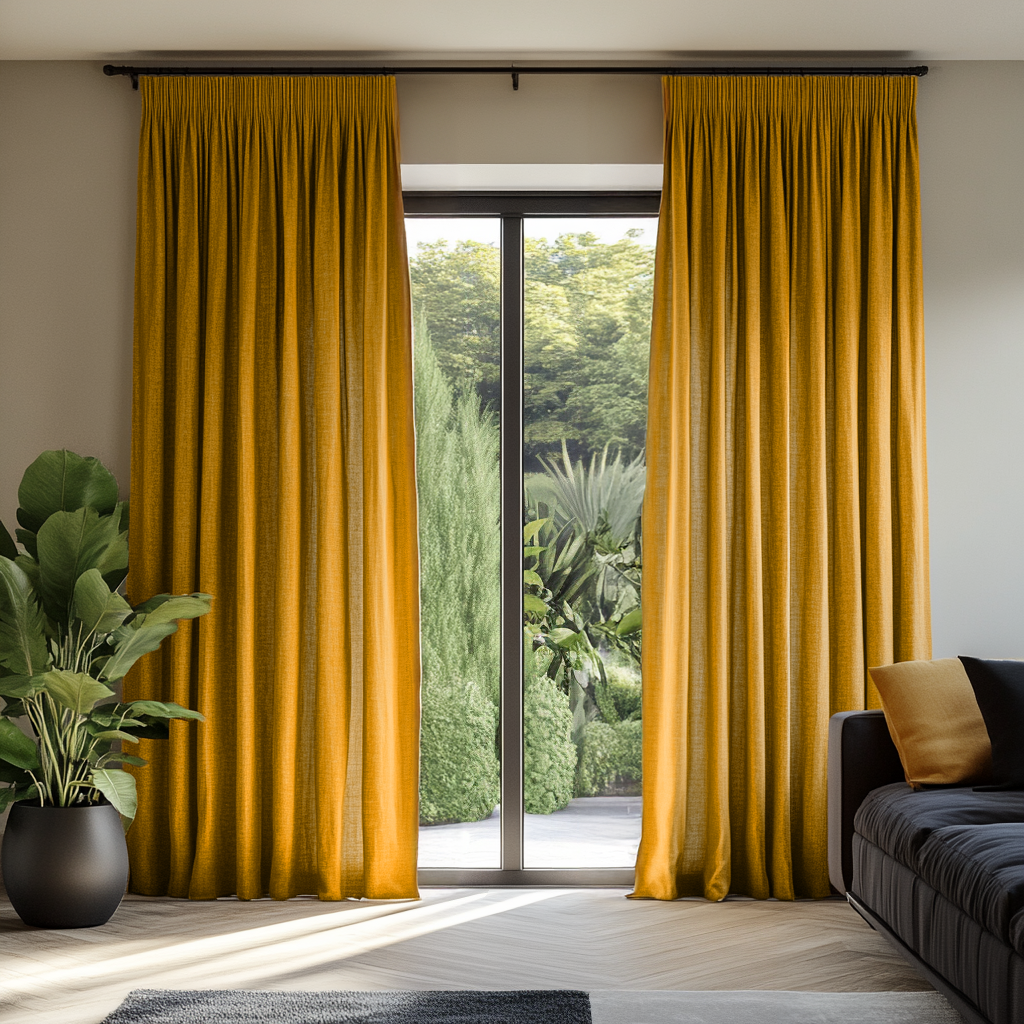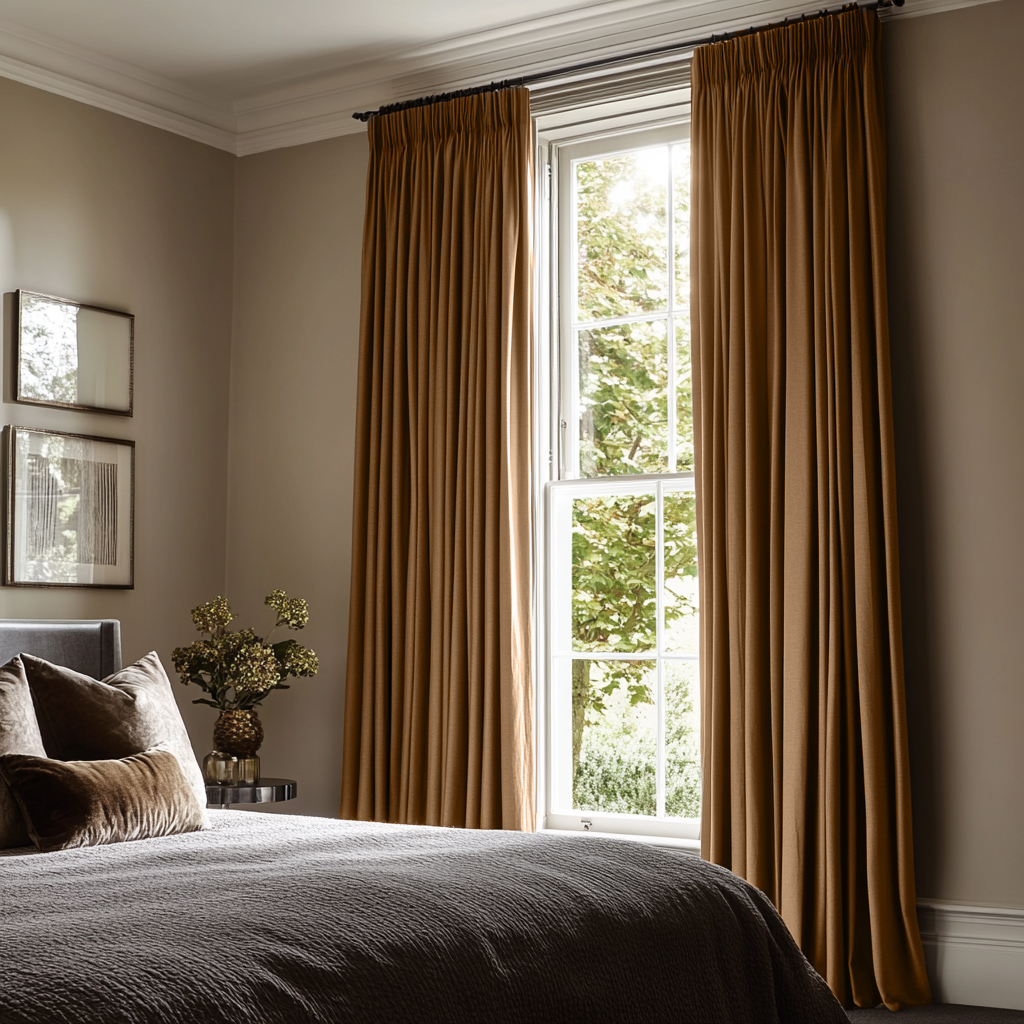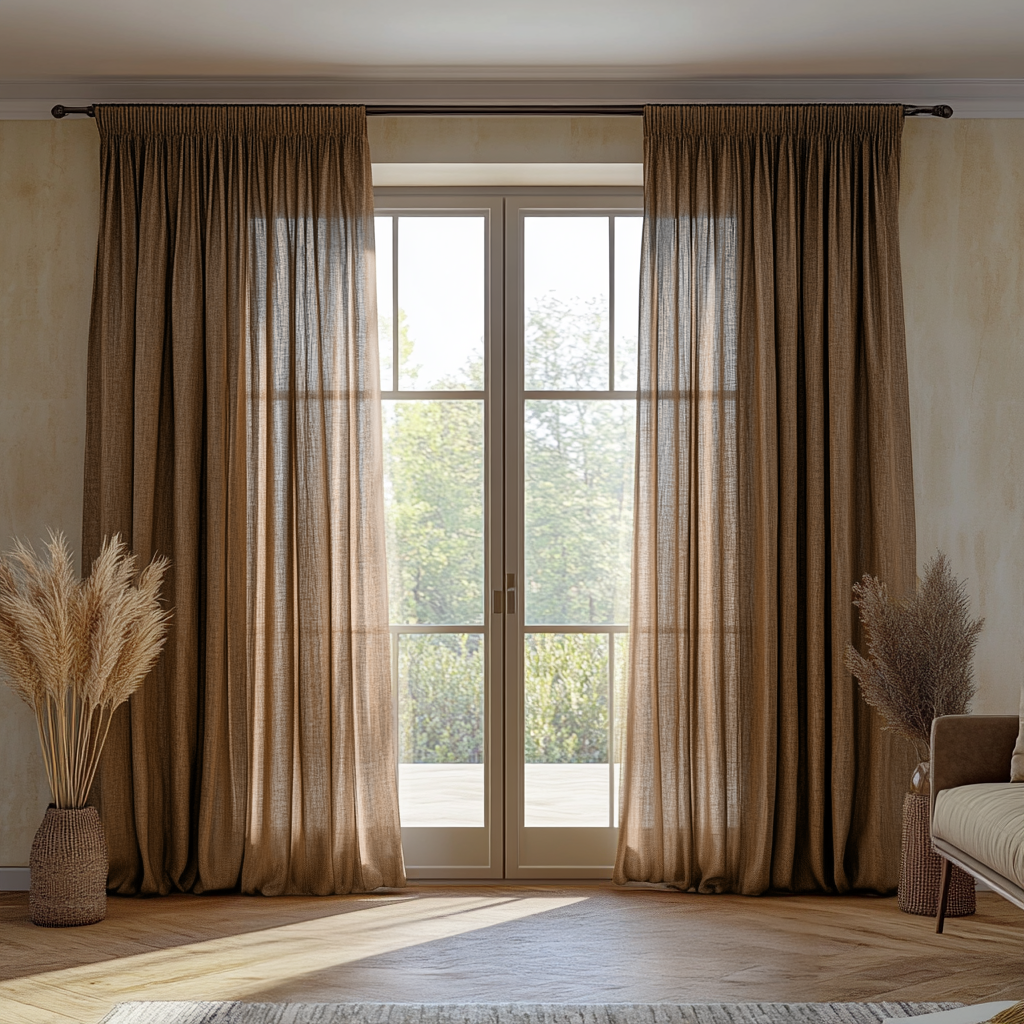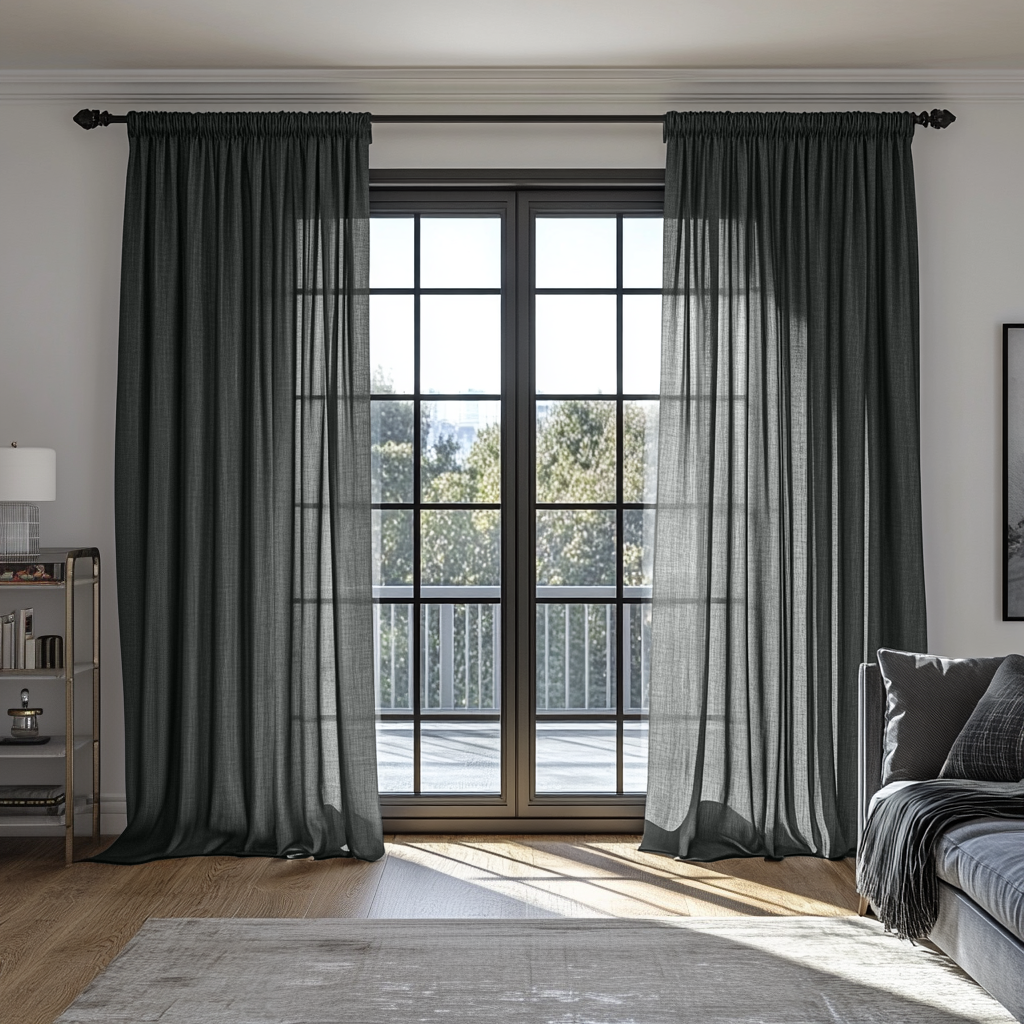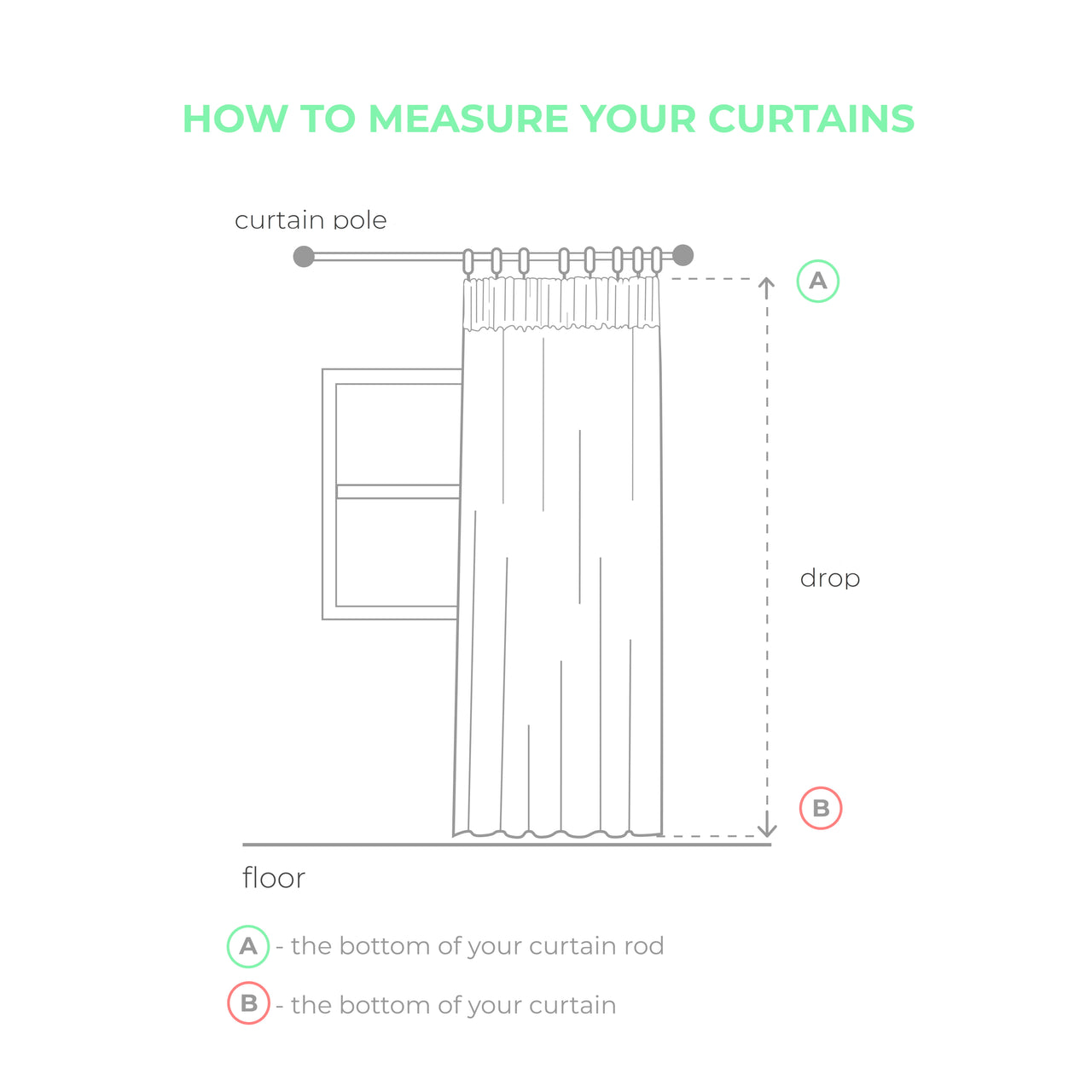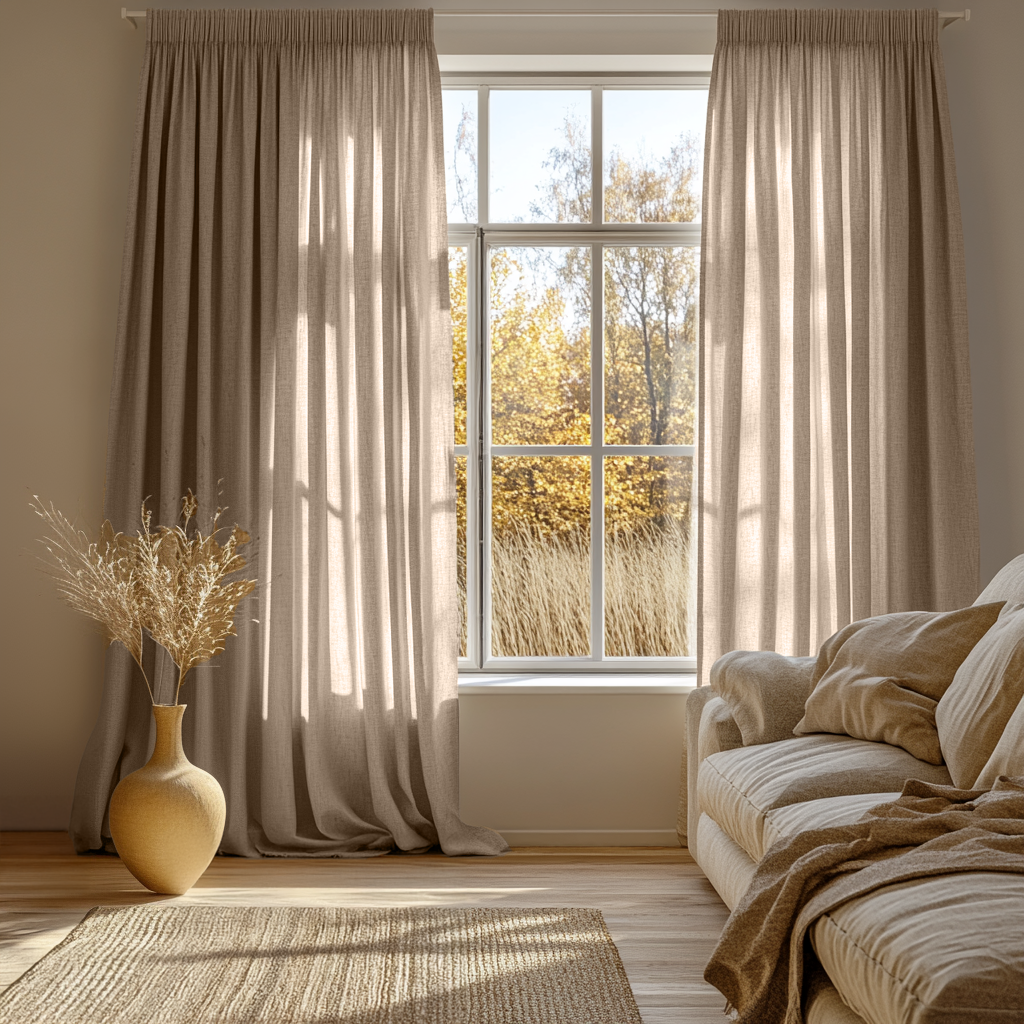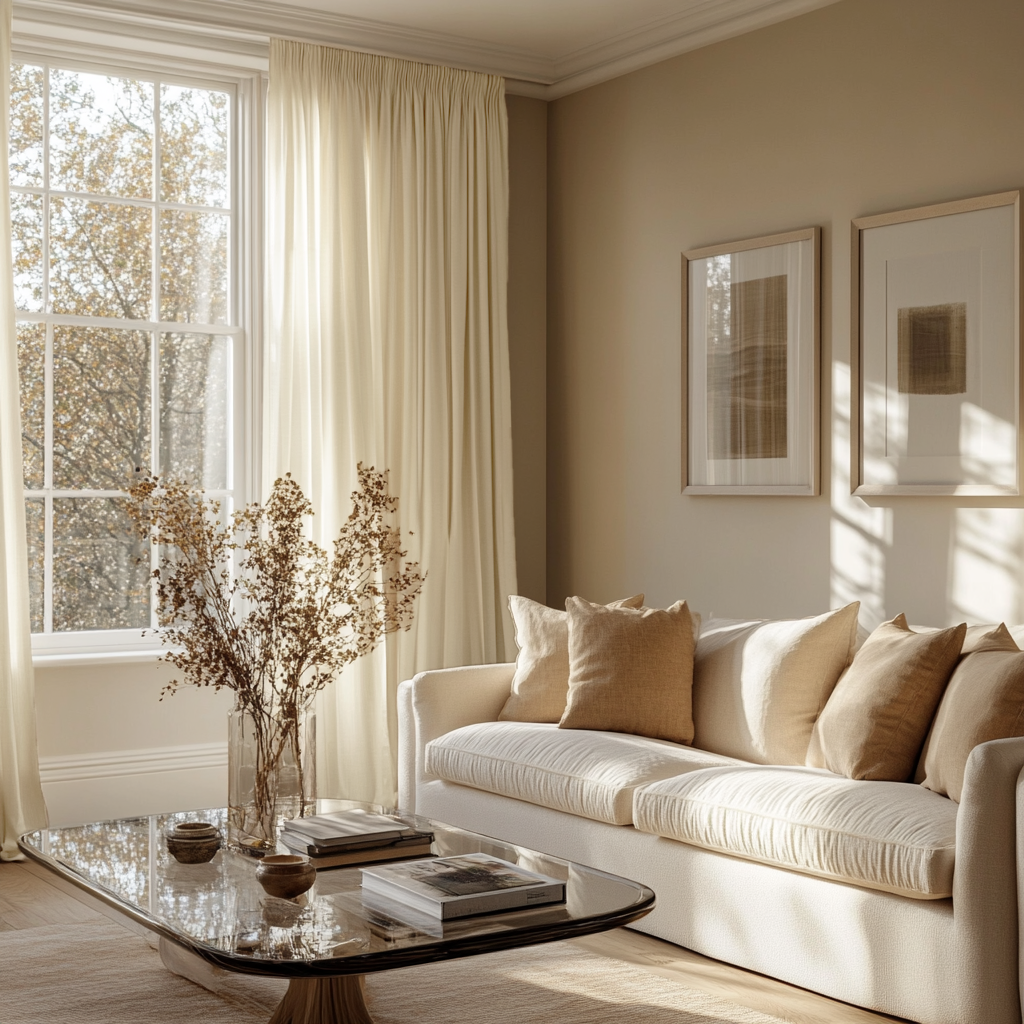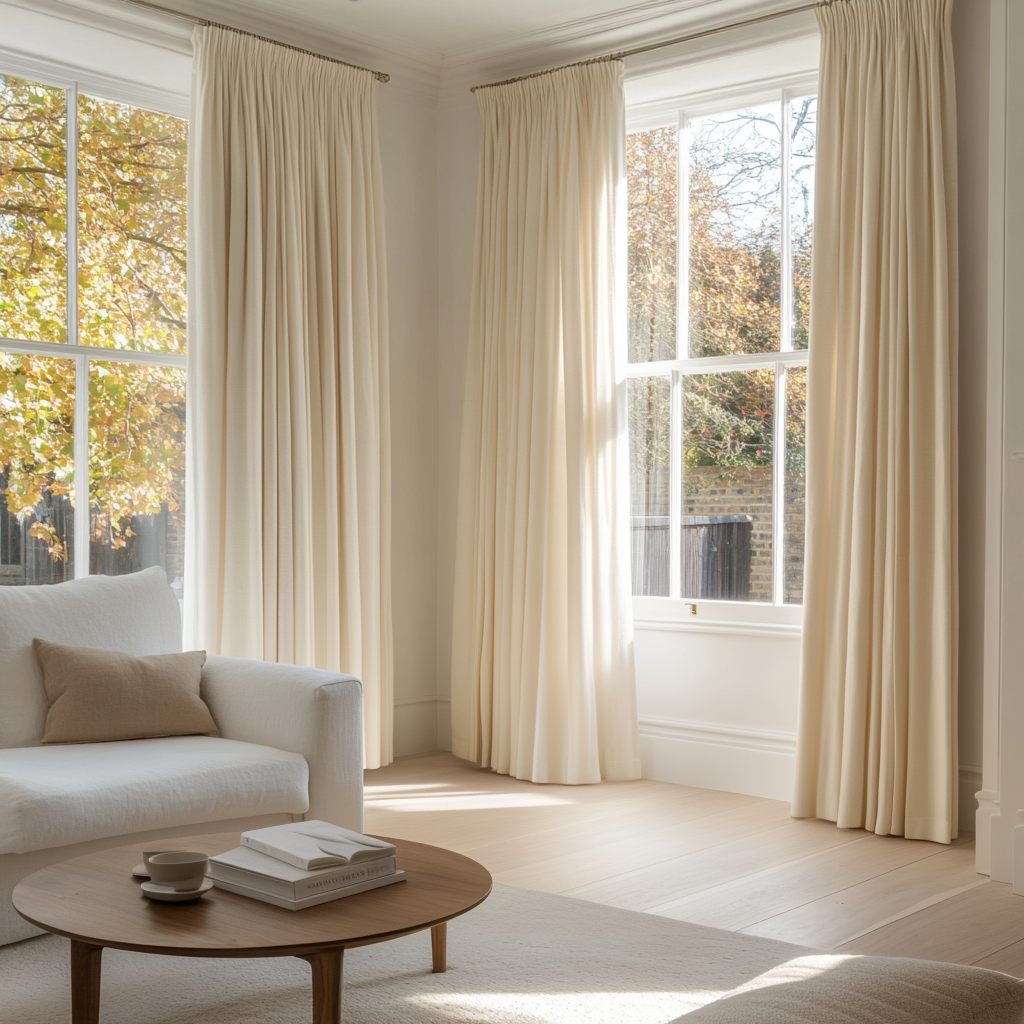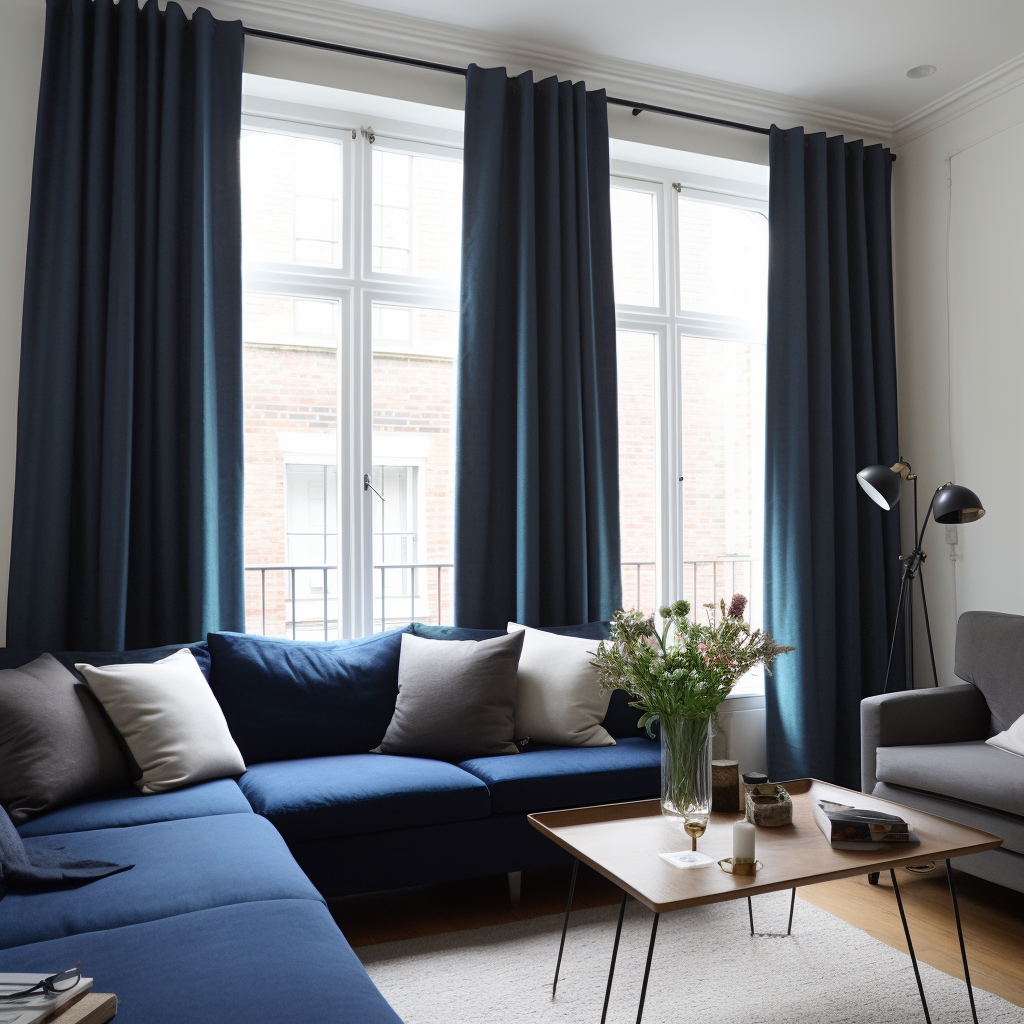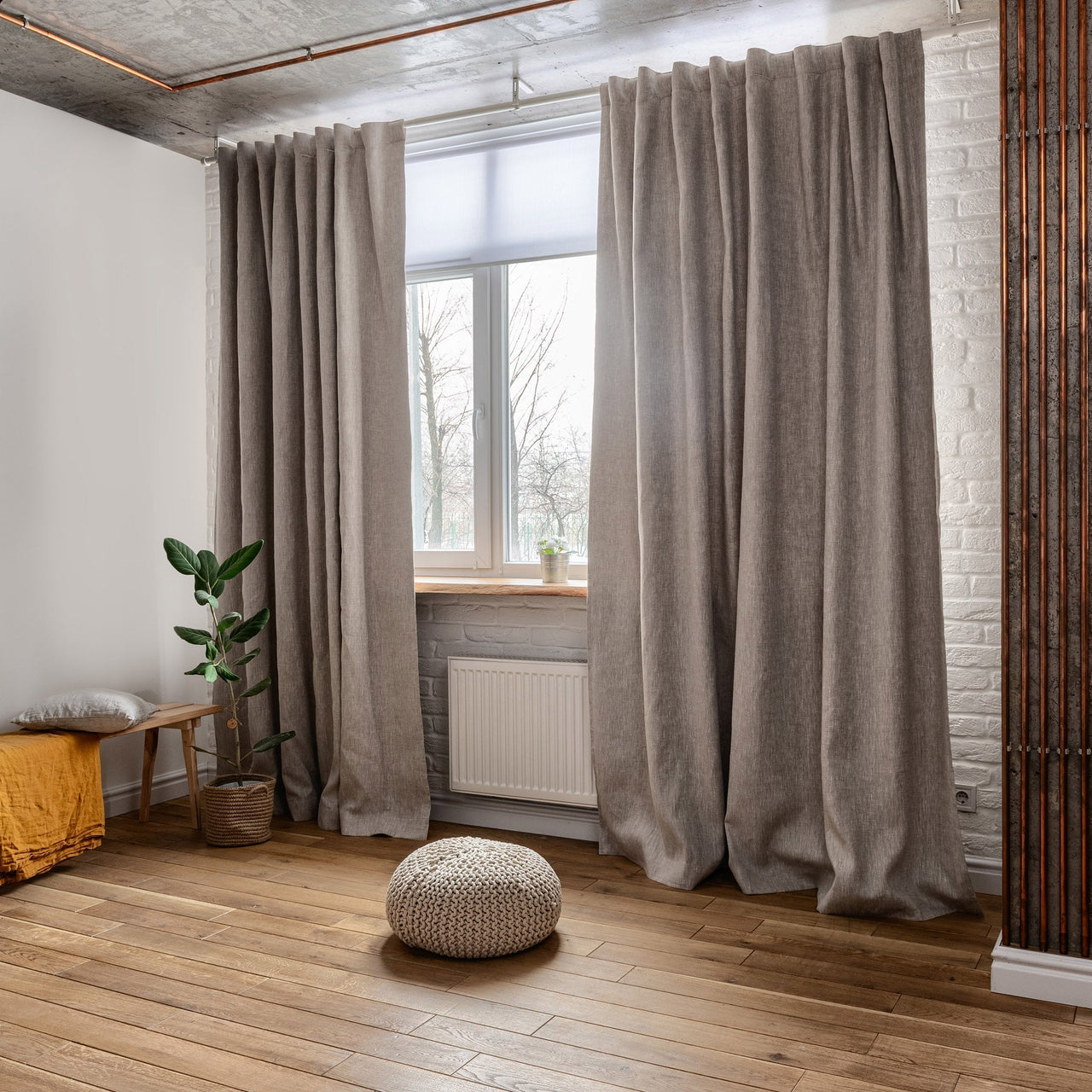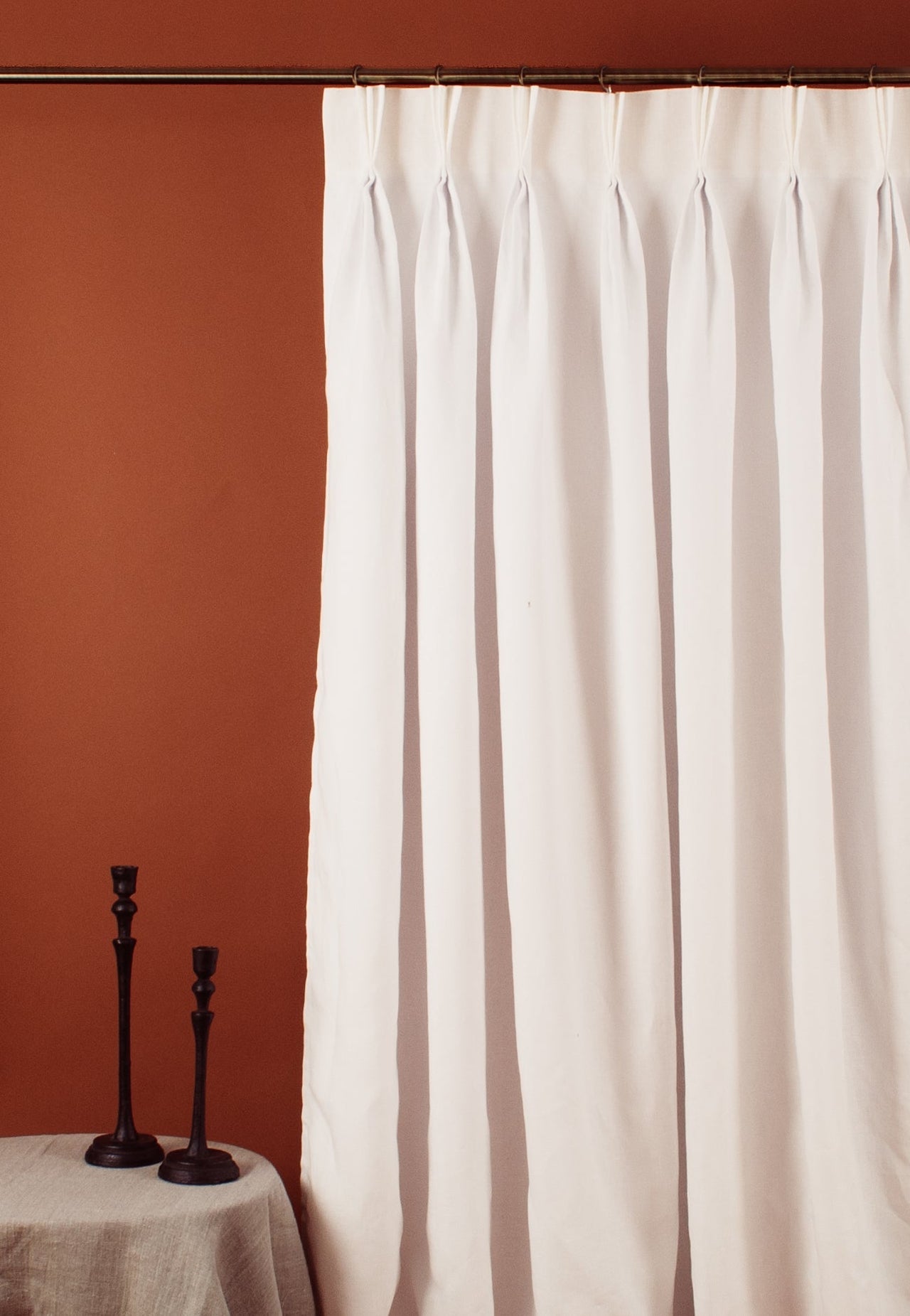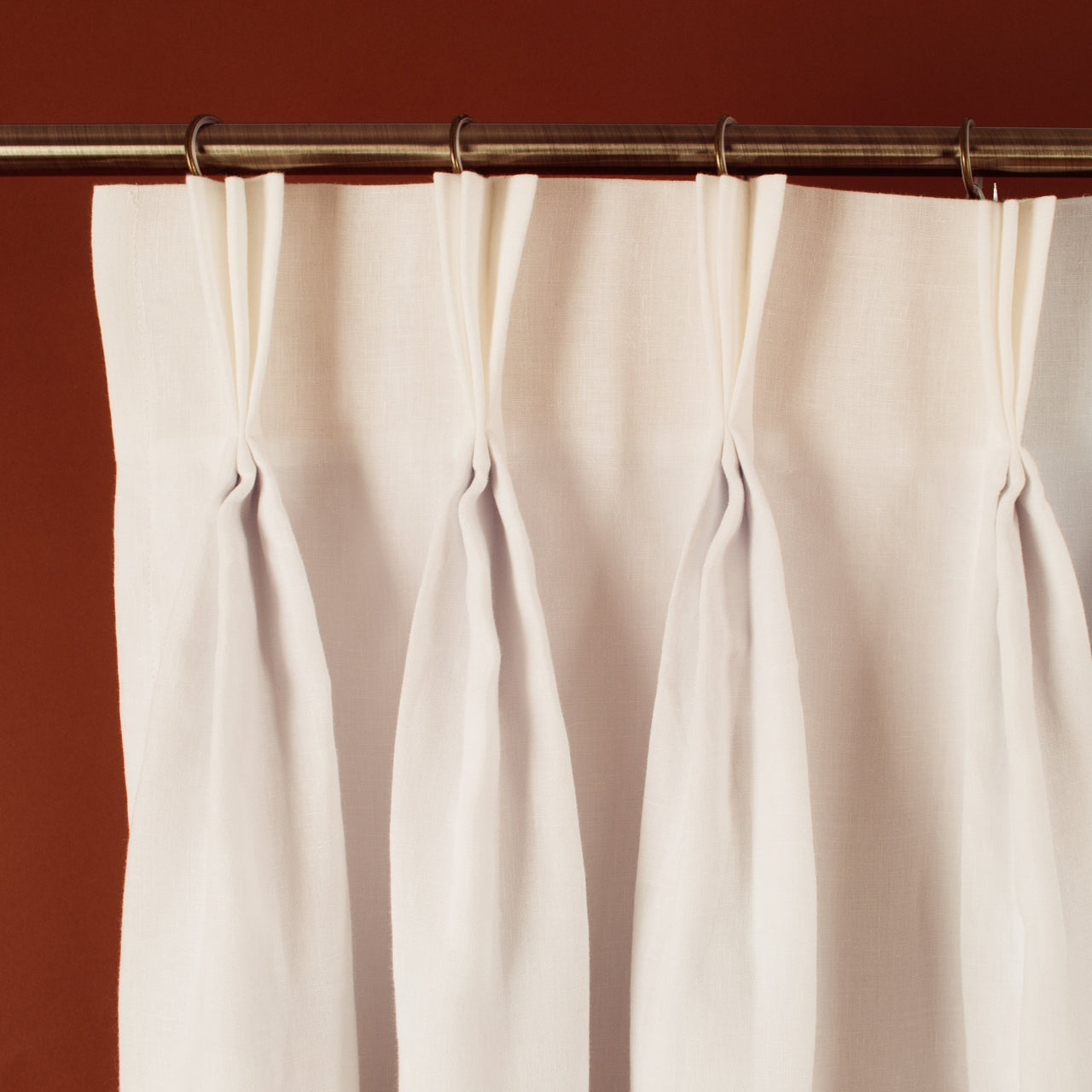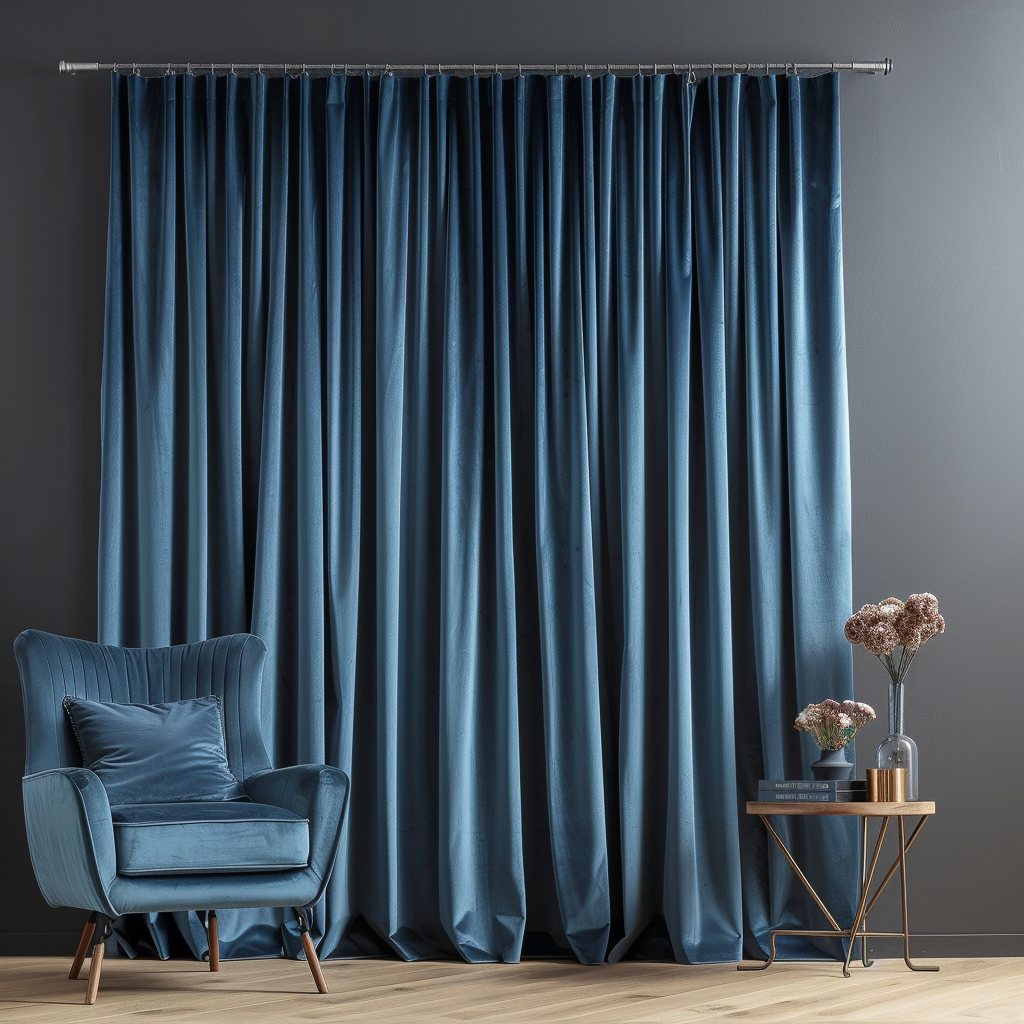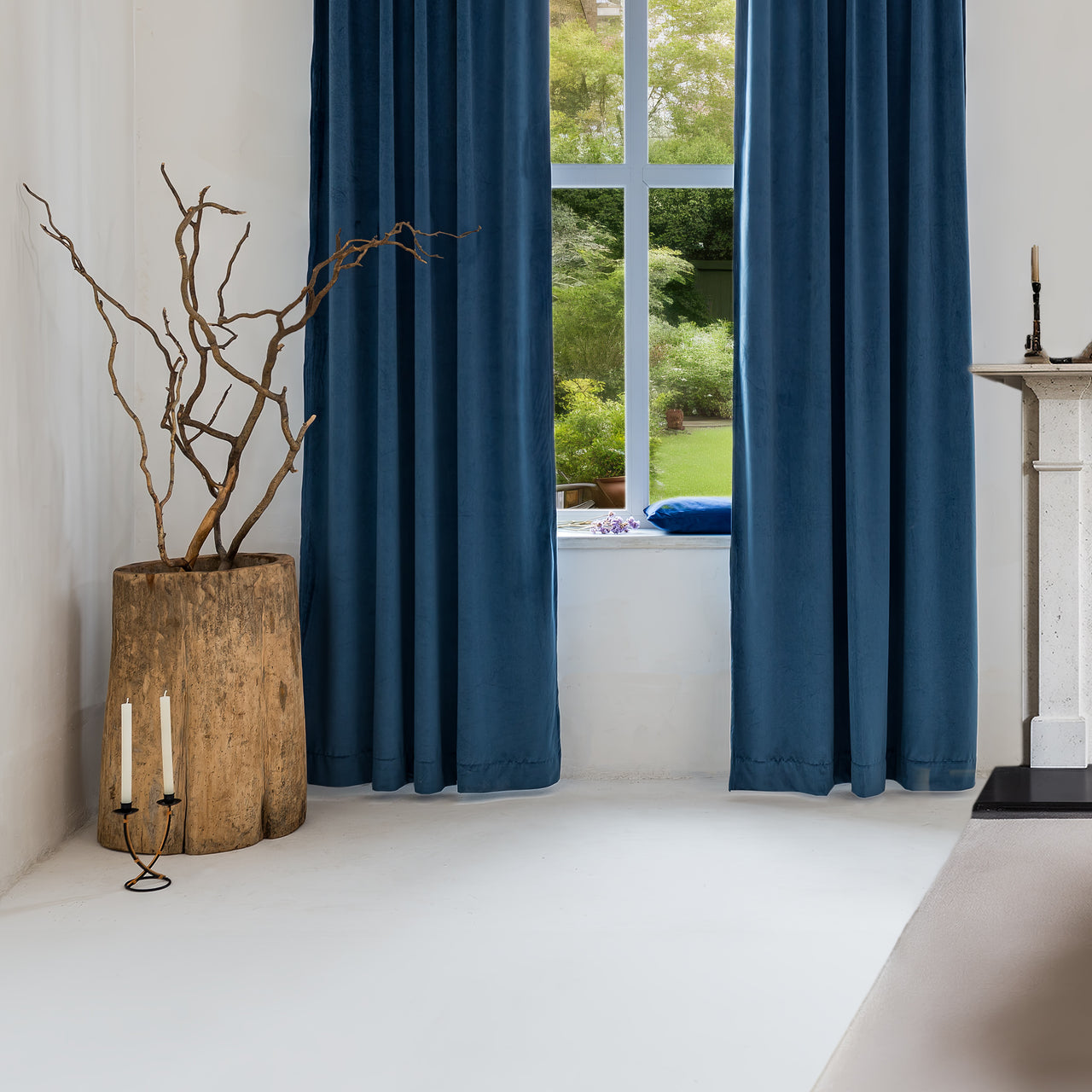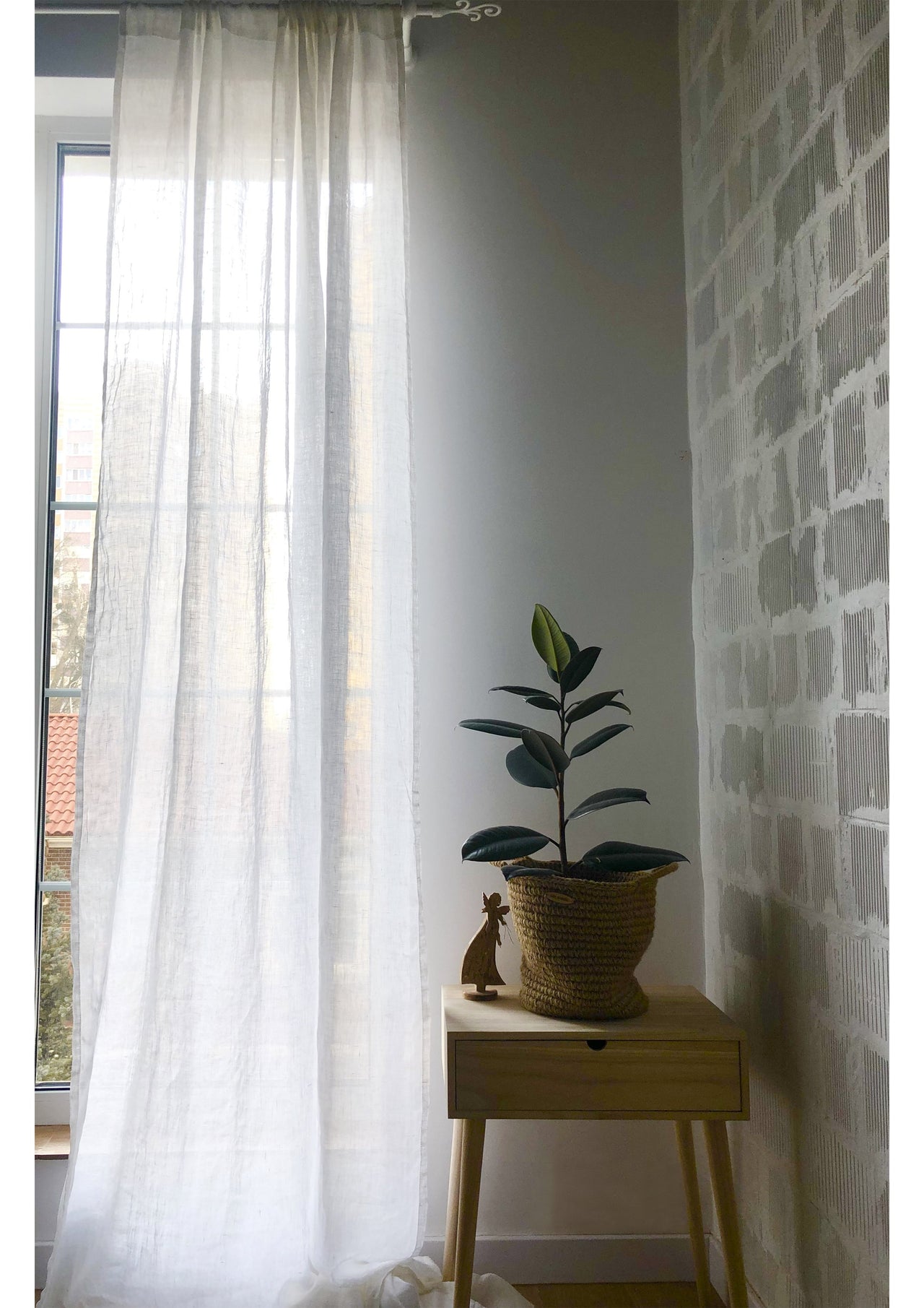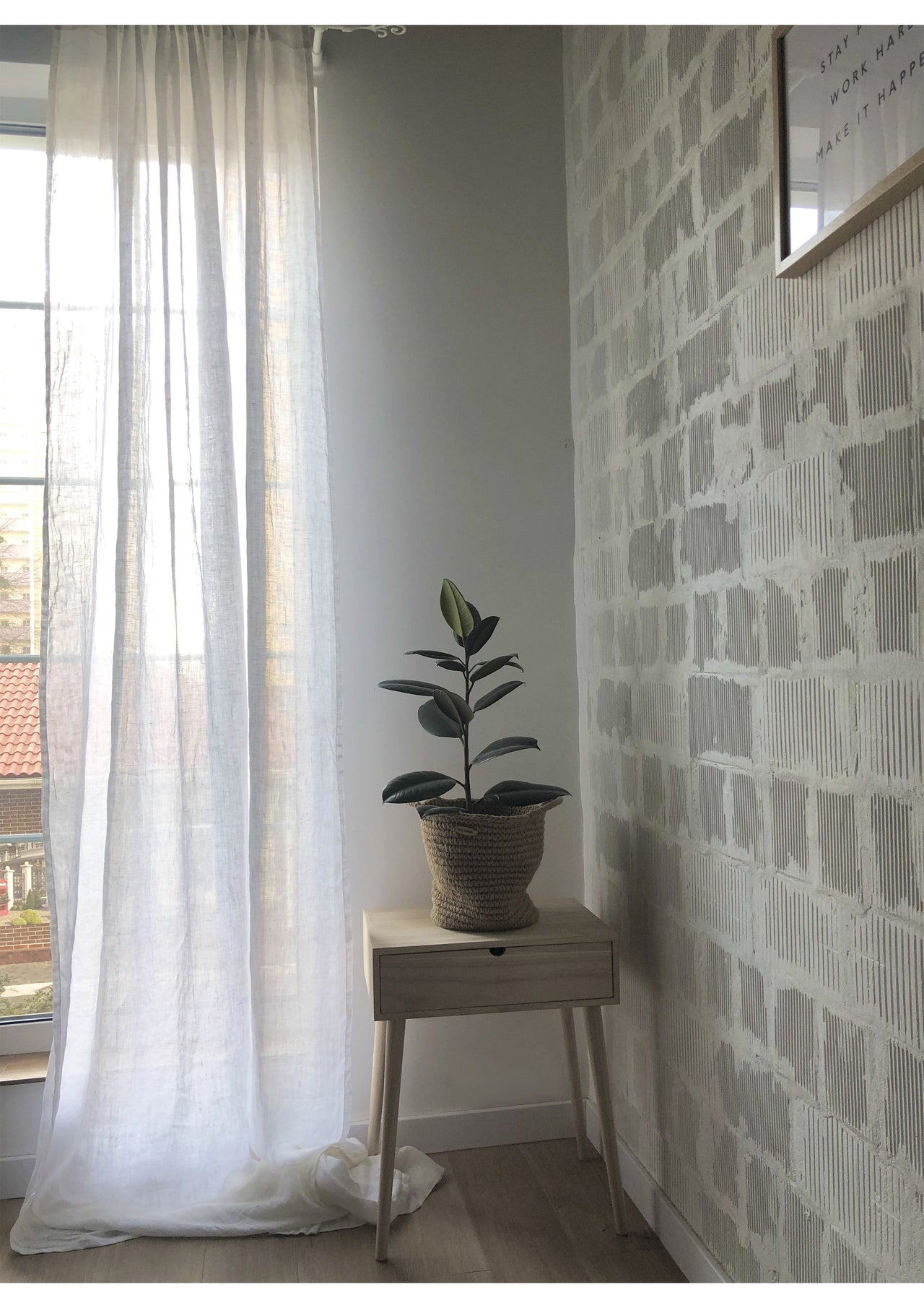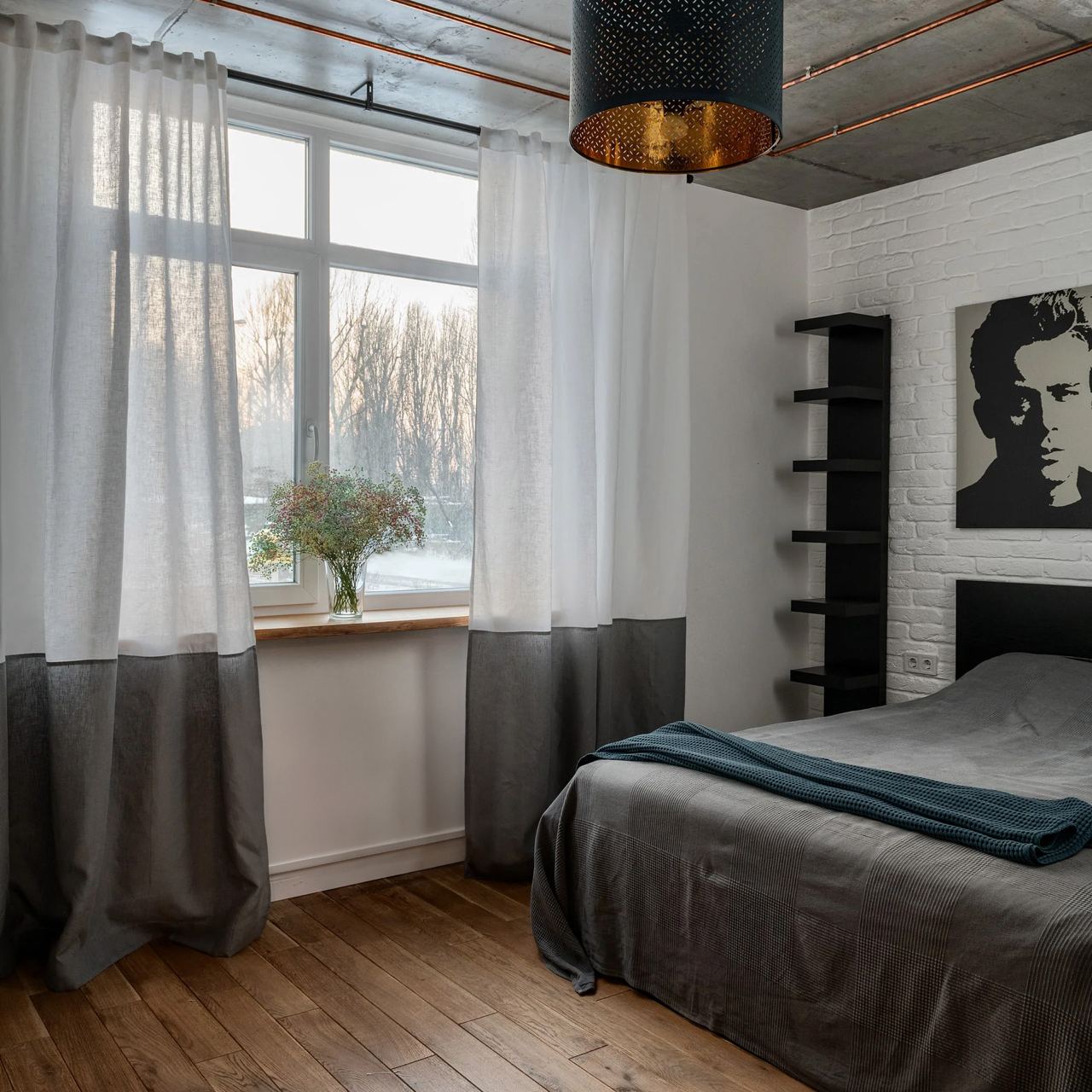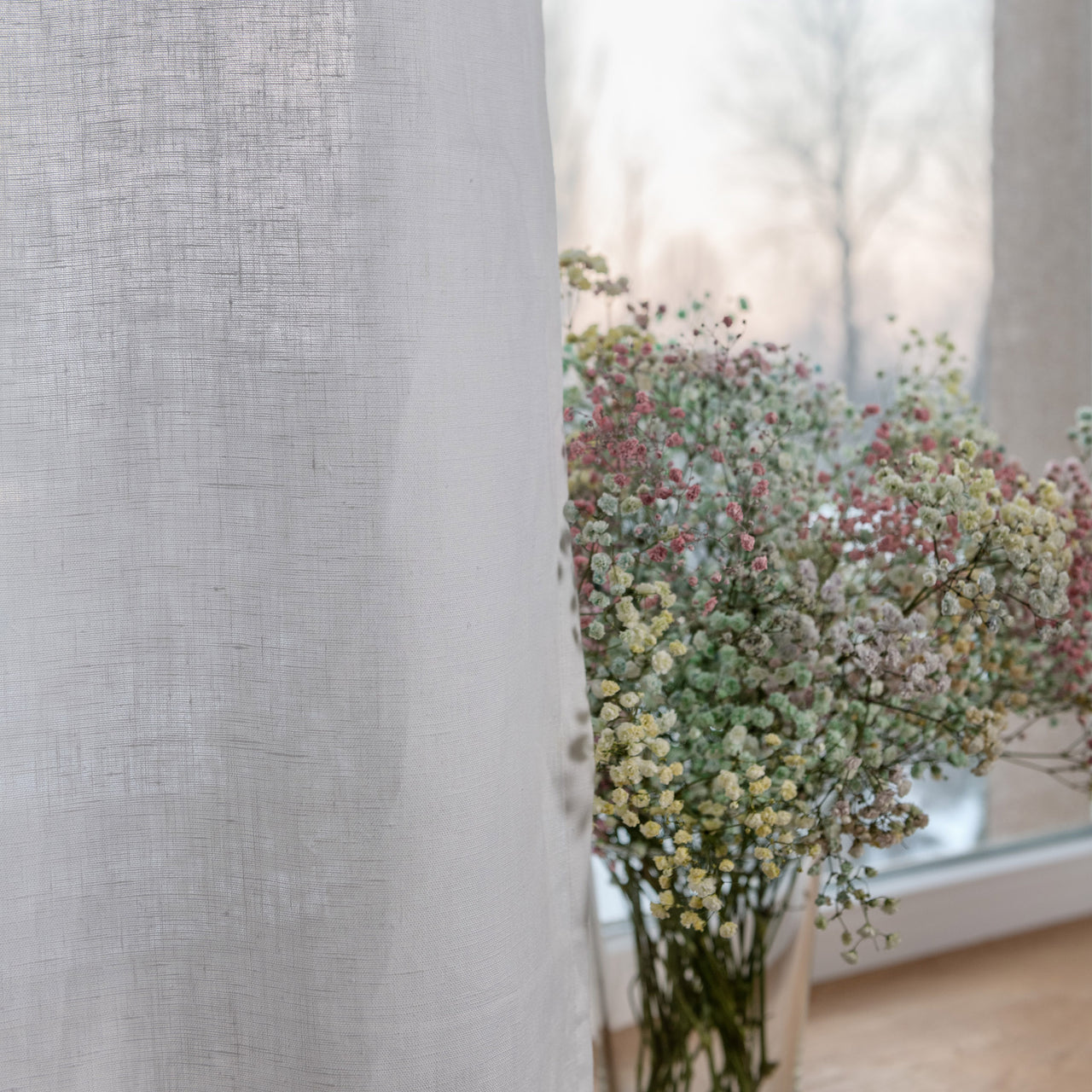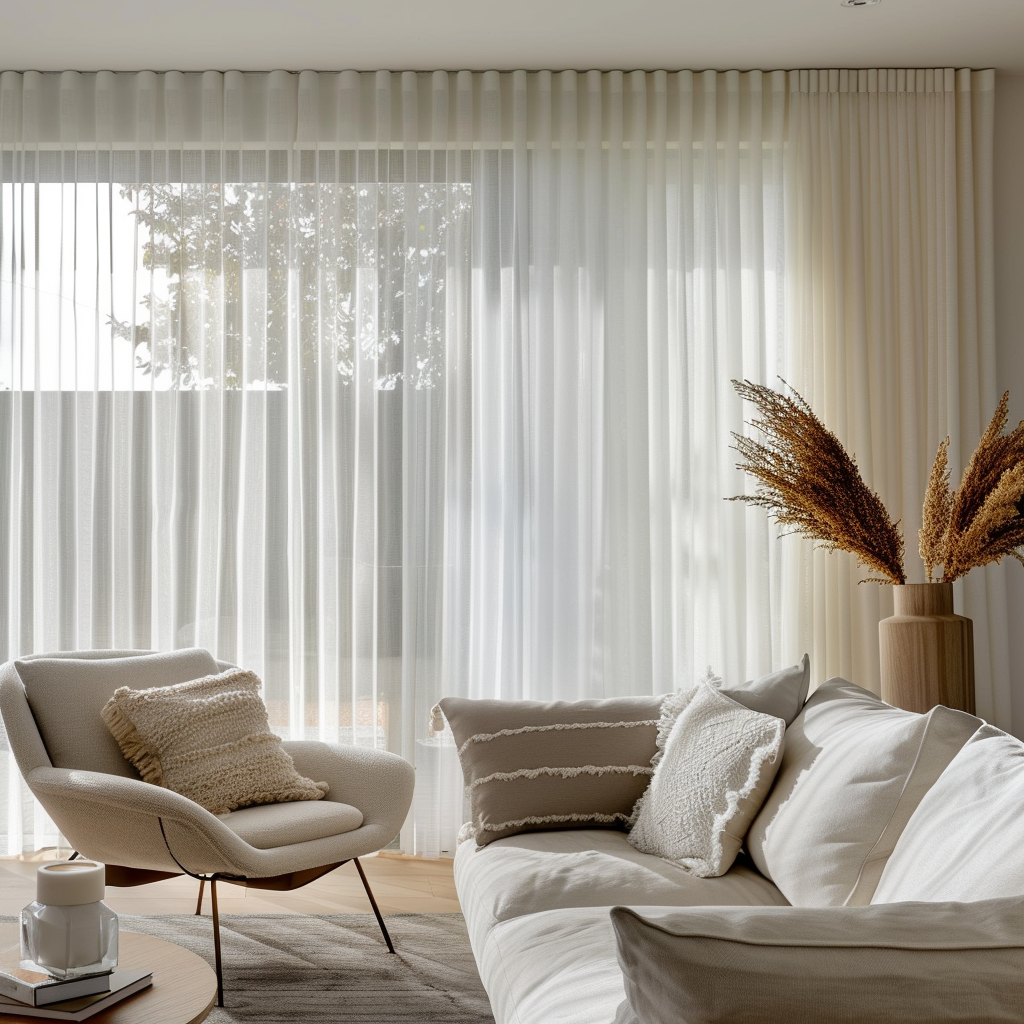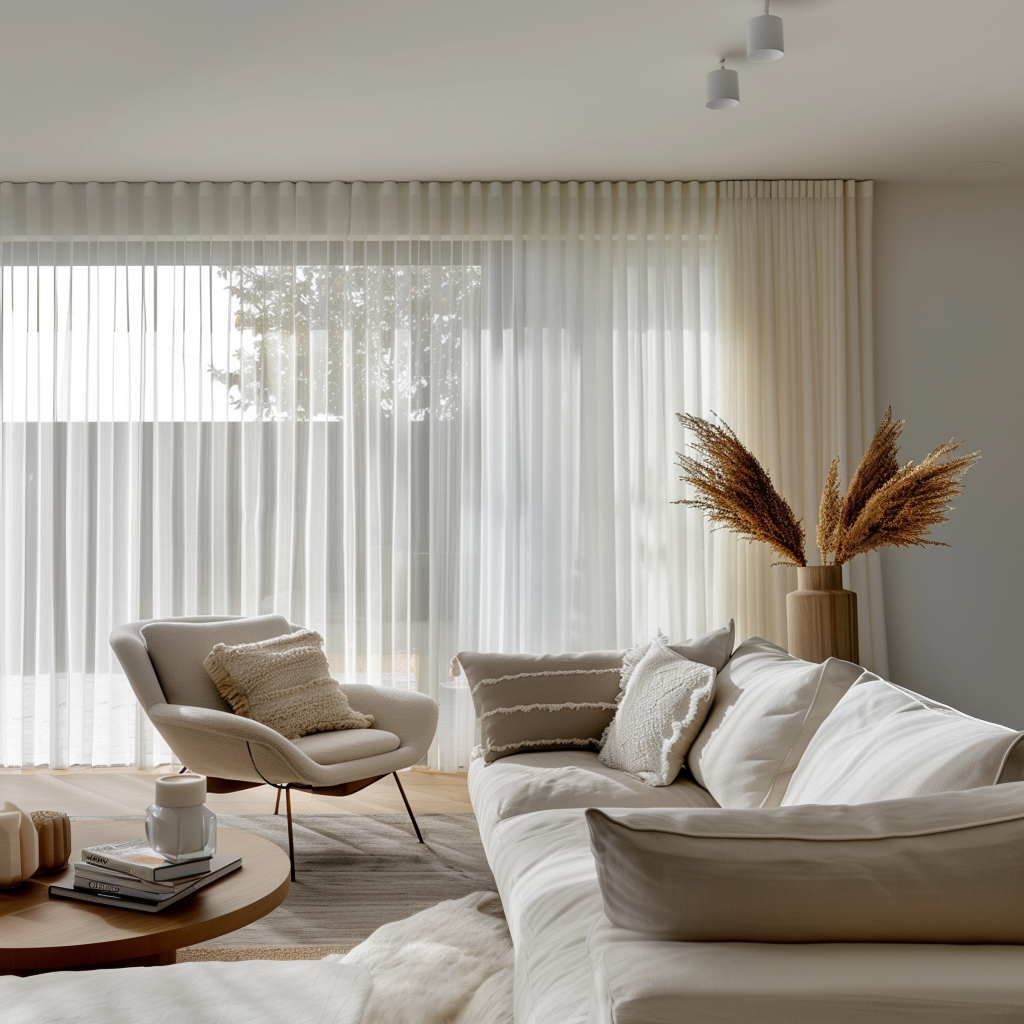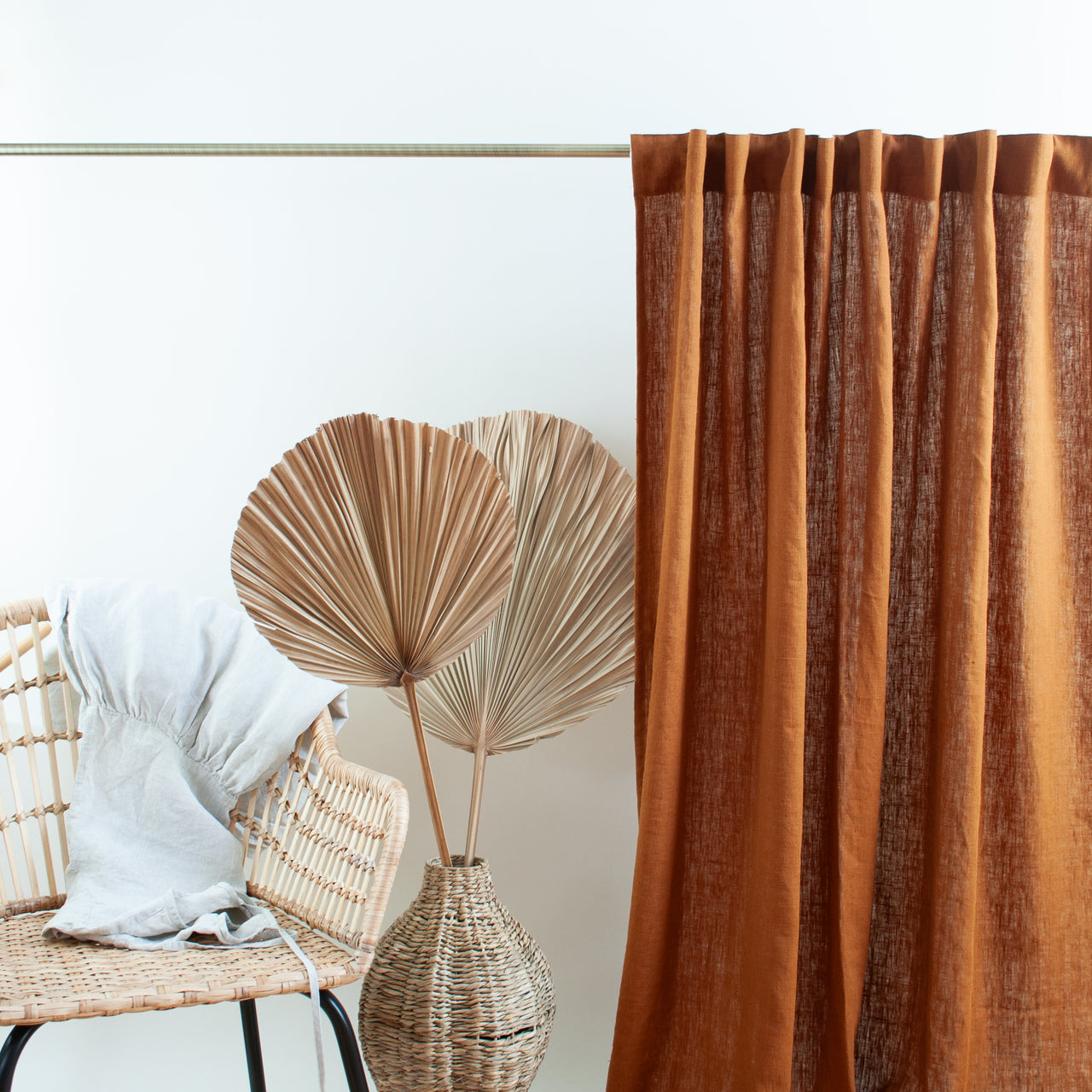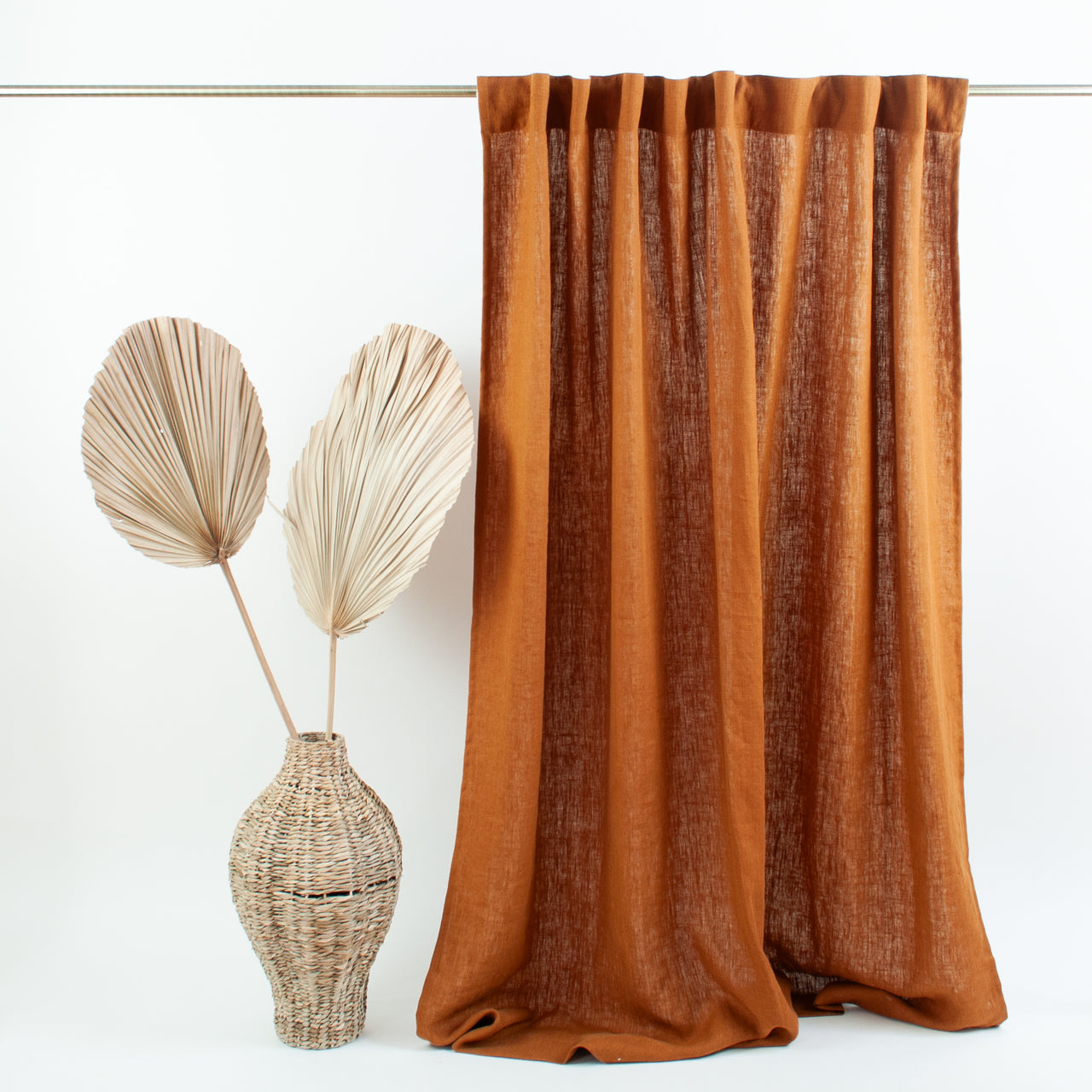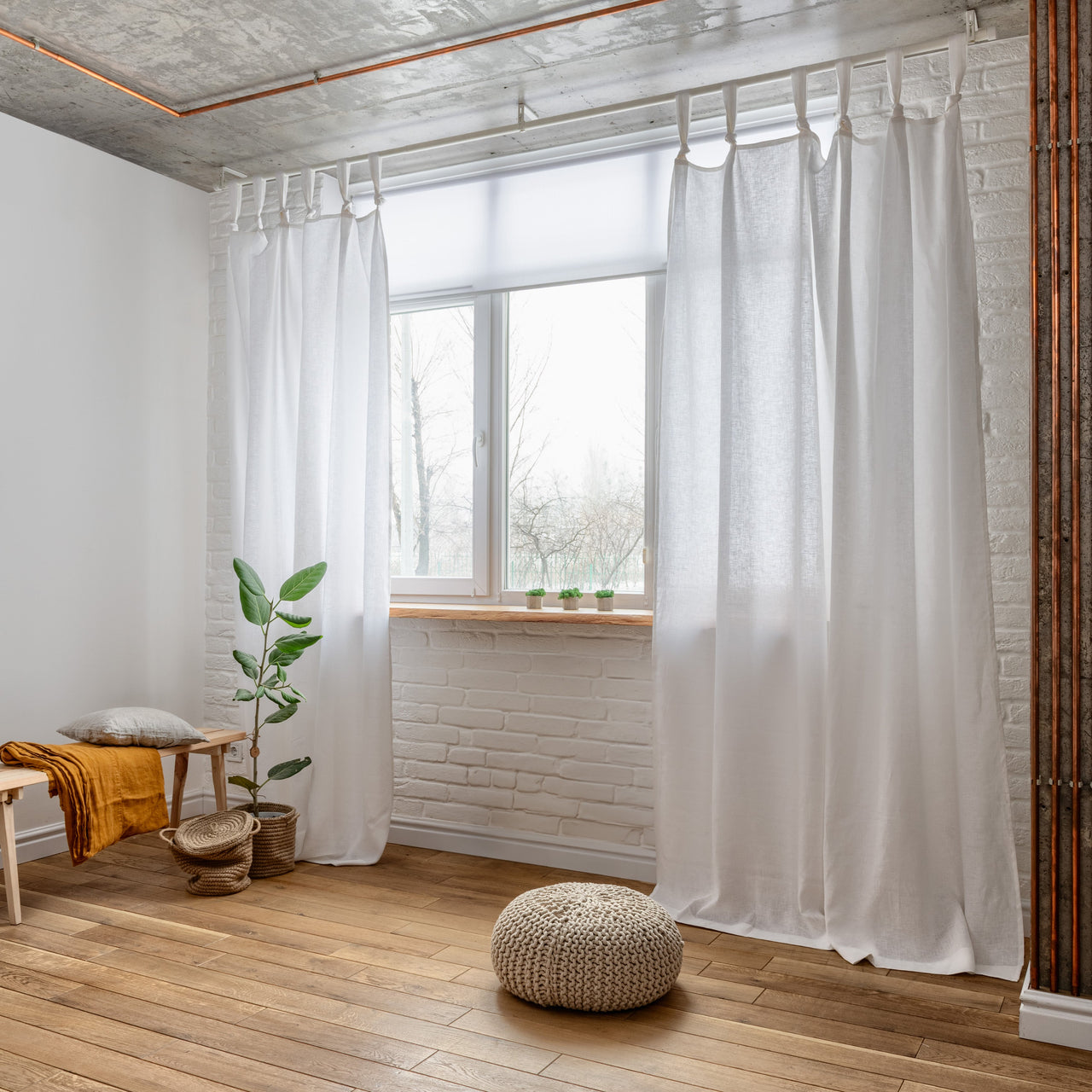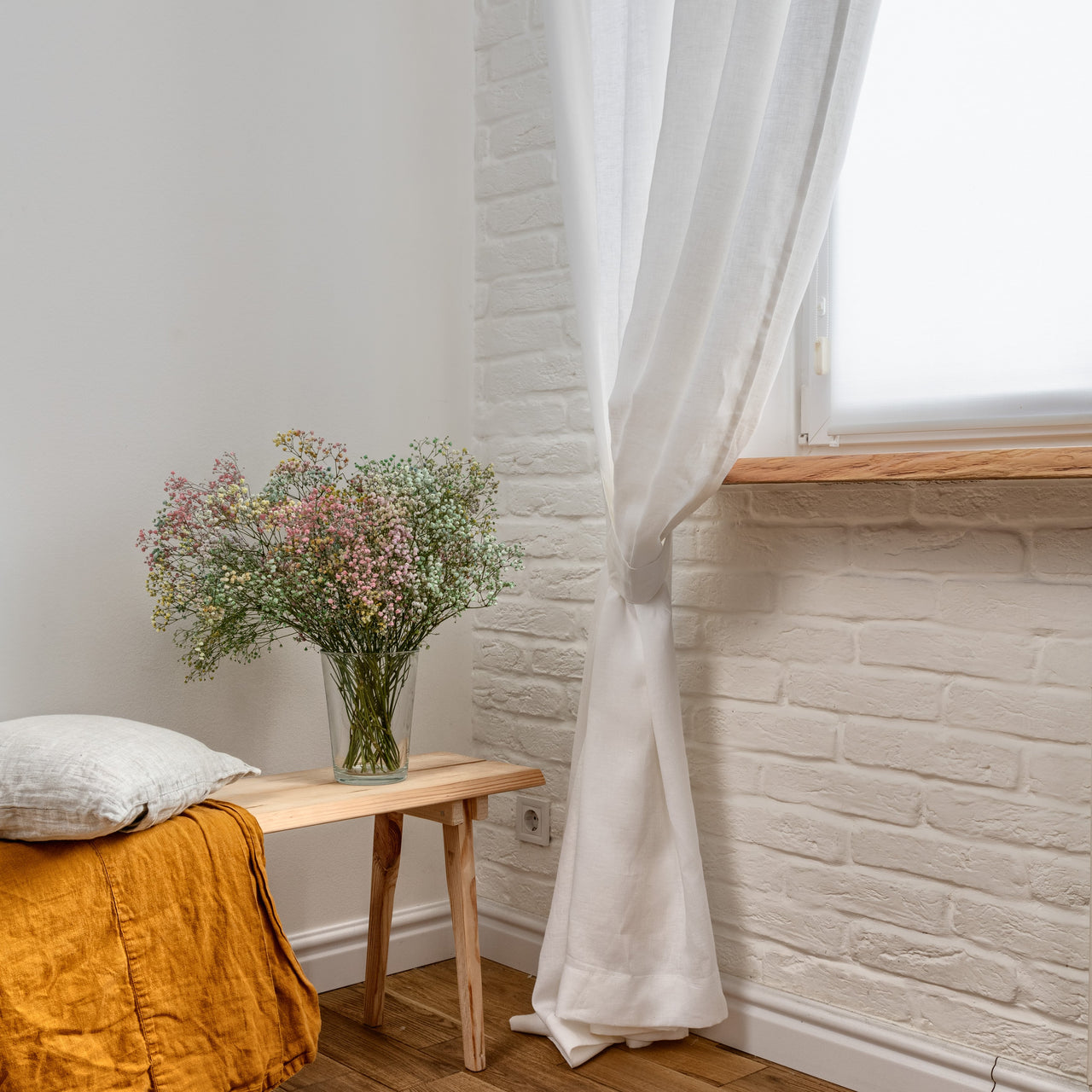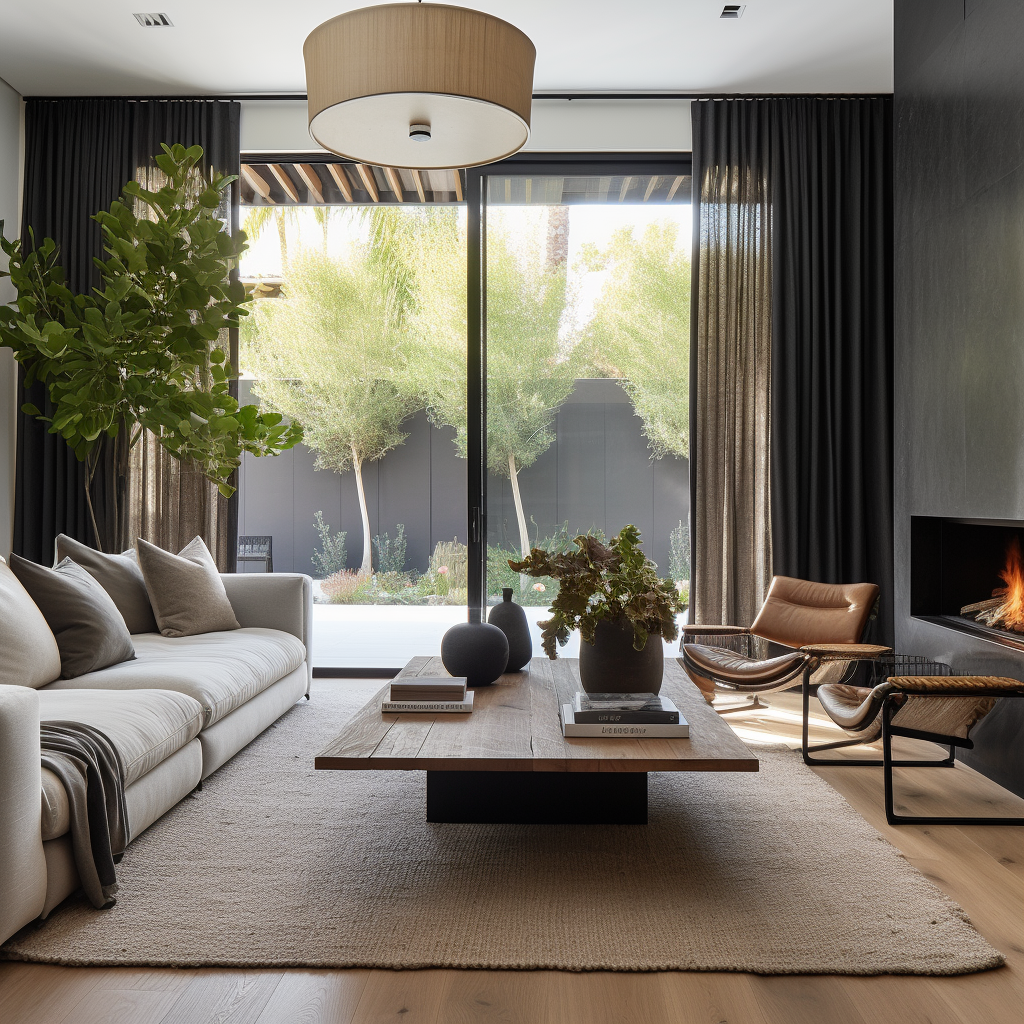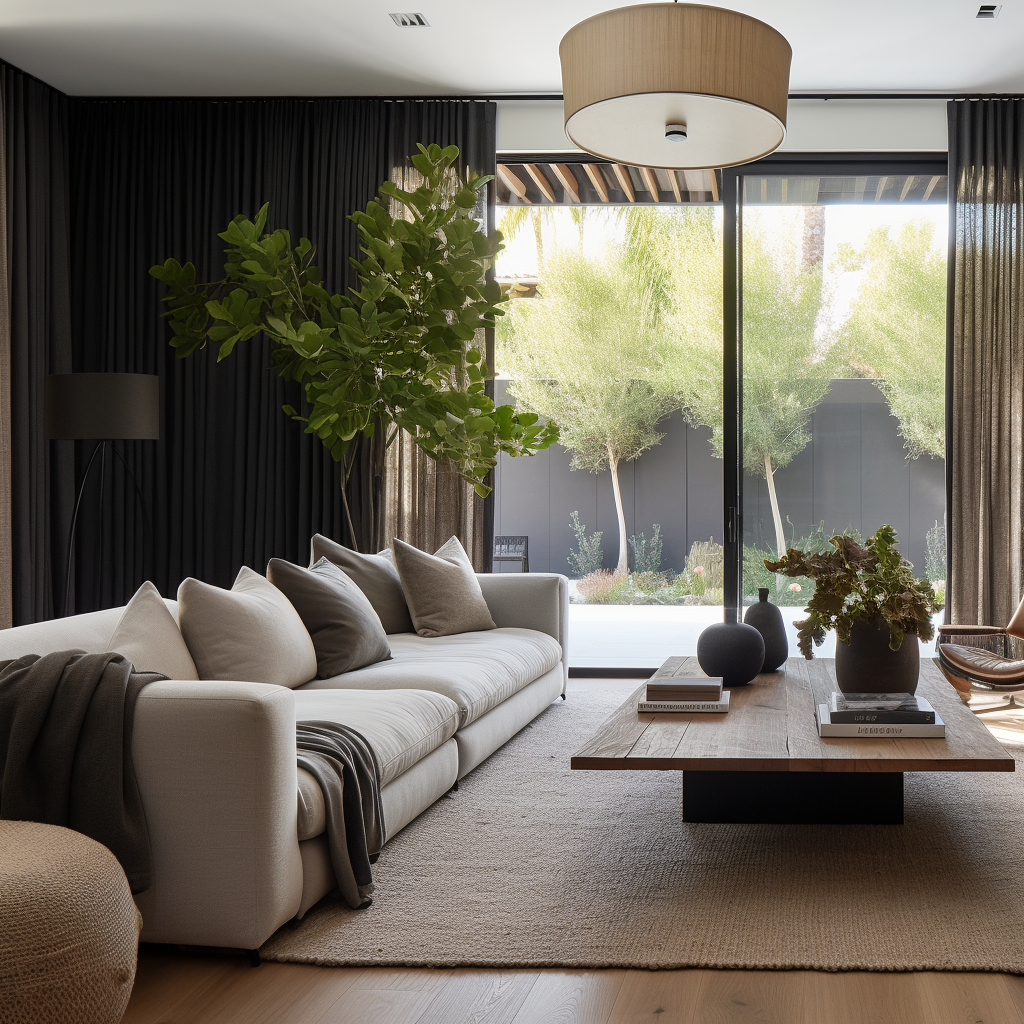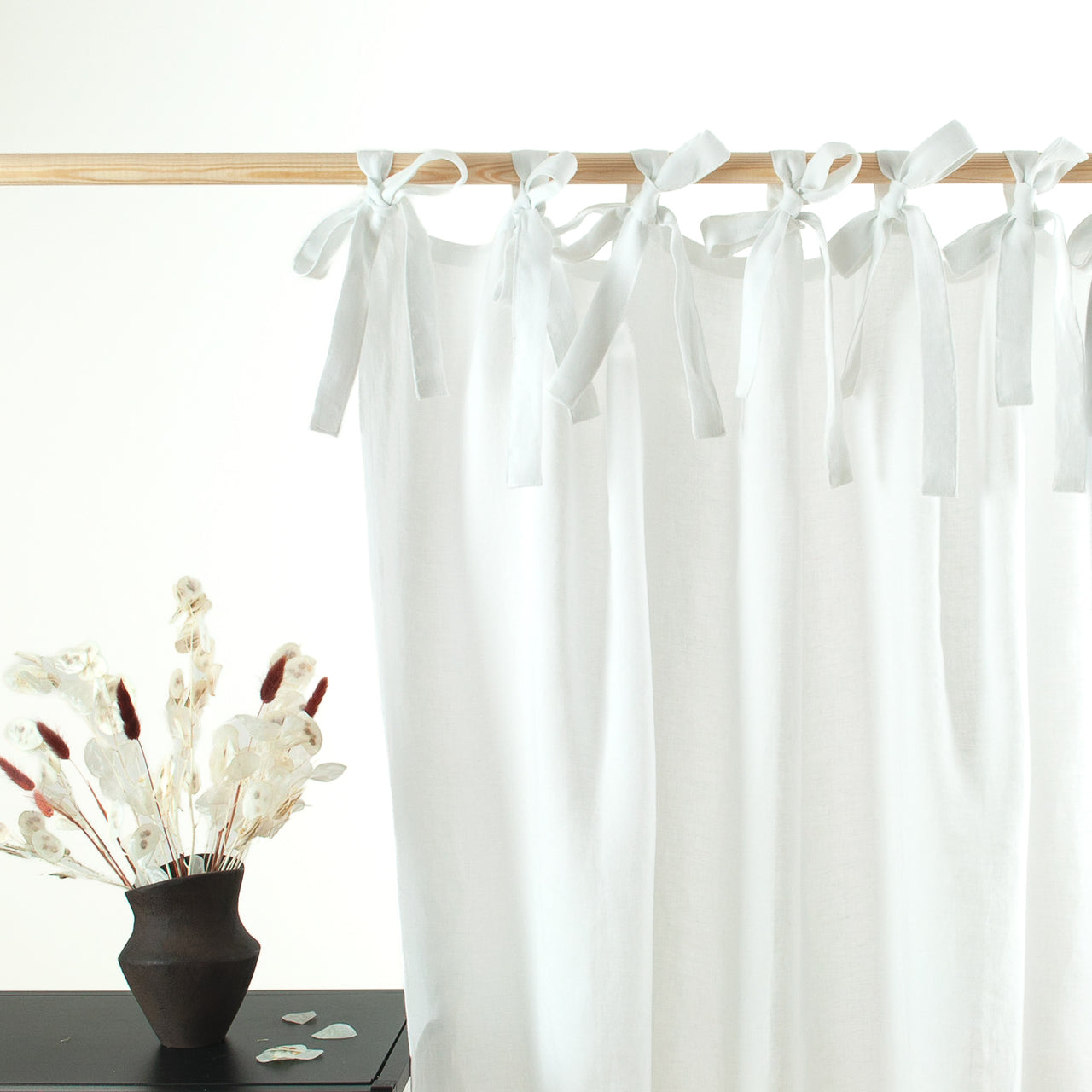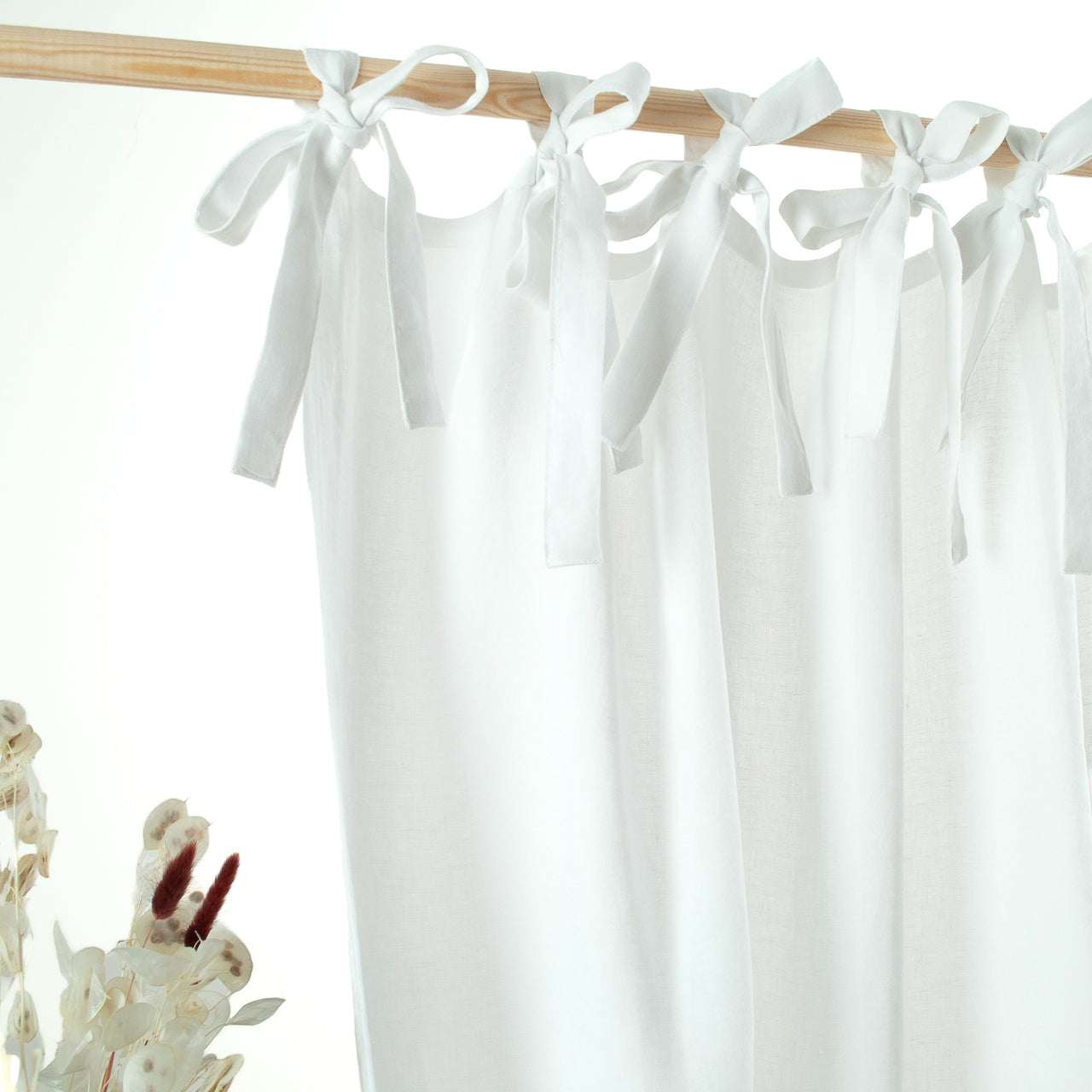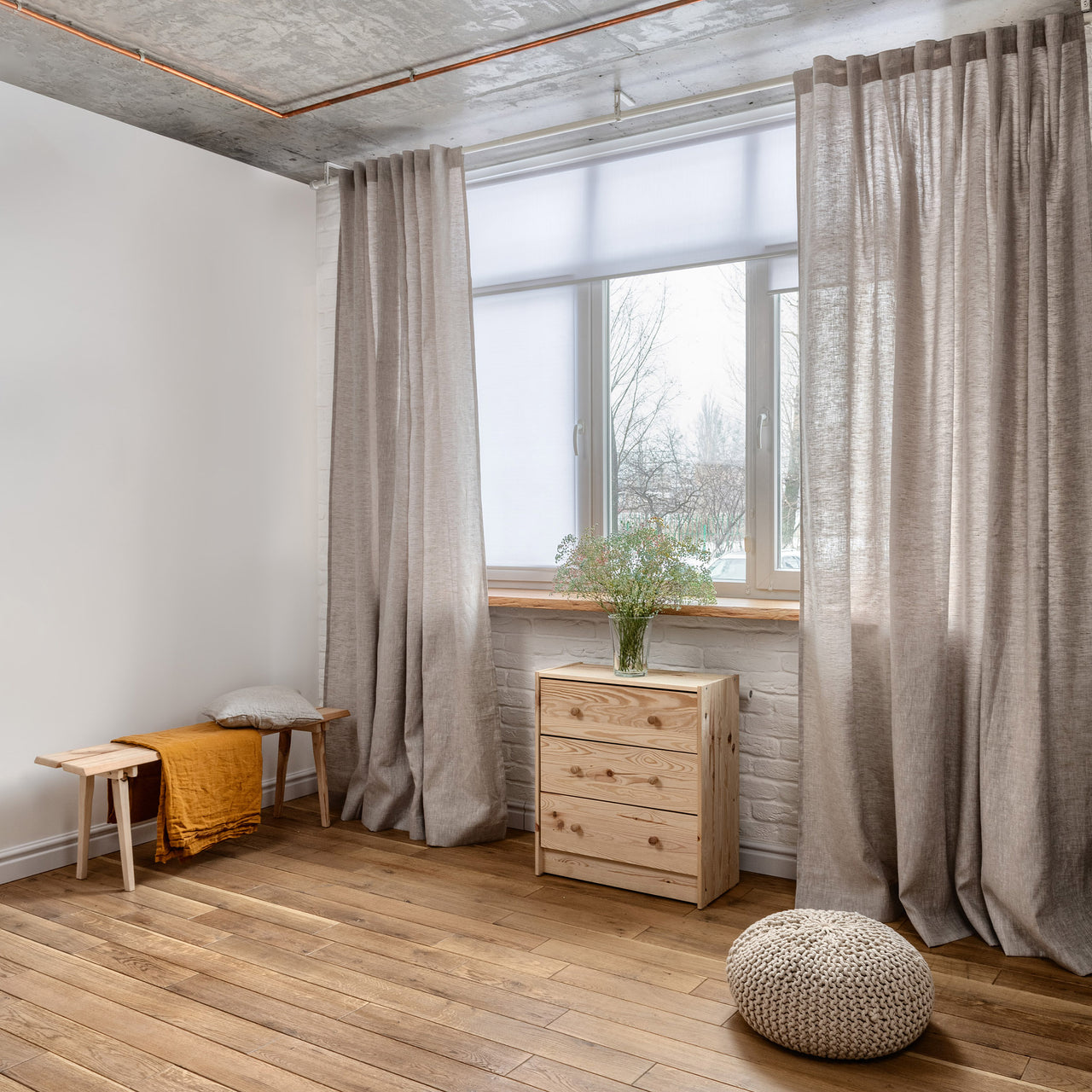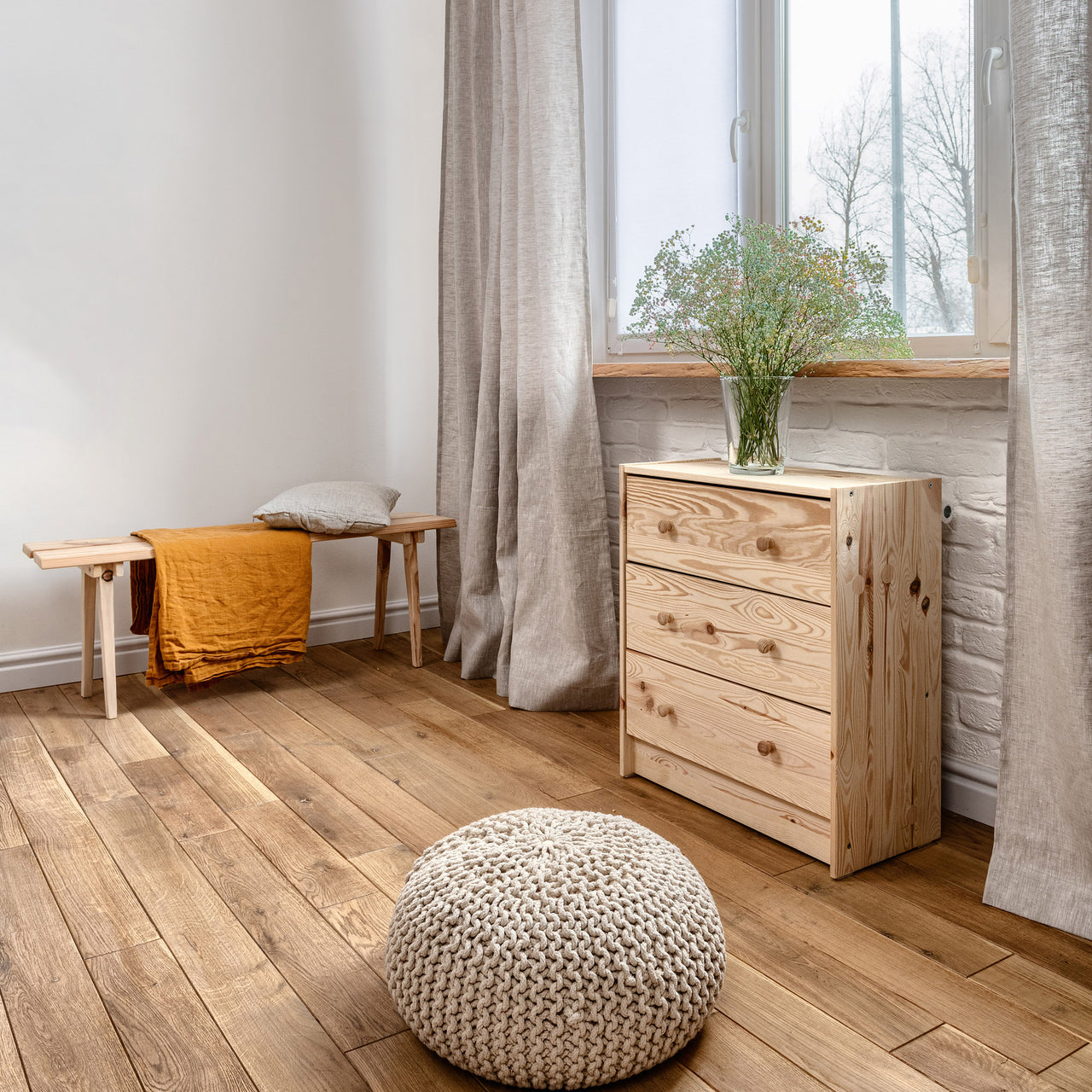Should Curtains Go From Floor to Ceiling?
In Australia, whether curtains should go from floor to ceiling depends on various factors, including the overall aesthetic, the height of the room, and personal preference. Here are some considerations to help you decide:
- Visual Height: Floor-to-ceiling curtains can visually elongate the room and create the illusion of higher ceilings, which is particularly beneficial in spaces with lower ceilings. This can make the space feel more spacious and airy.
- Insulation and Light Control: Floor-to-ceiling curtains like semi sheer curtains with sturdy curtain rod provide better insulation and light control and light filtering compared to blockout curtains that only cover the window area. They can help to block out more sunlight and heat in summer and retain warmth in winter, enhancing energy efficiency.
- Aesthetic Impact: Layering sheer curtains with floor-to-ceiling curtains can create a stunning and lavish ambiance, particularly when matched with tall windows and high-quality curtain rods or in rooms boasting lofty ceilings with expert installation. This combination can infuse an aura of opulence and refinement into the space, especially when embellished with chic sheer curtains crafted from a diverse range of sheer fabrics, imparting them with a designer flair.
- Privacy: Longer curtains provide better privacy, especially if the windows are located on the ground floor or facing a busy street. Floor-to-ceiling curtains can fully cover the window area ensuring maximum privacy when needed.
- Maintenance: Keep in mind that floor-to-ceiling curtains may require more maintenance, as they can gather dust and dirt more easily. However, regular cleaning and maintenance help keep them looking fresh and elegant.
- Cost and Installation: Installing floor-to-ceiling curtains may require custom sizing and additional hardware,including mounting brackets to secure them to the rod on the wall, which could increase the overall cost. Consider your budget and whether the investment aligns with your design goals and preferences.
Ultimately, whether curtains should go from floor to ceiling in an Australian home depends on your individual style preferences,price, preferred materials, the specific requirements of the space, quality and practical considerations. Floor-to-ceiling curtains can make a bold design statement with stylish rod material and offer functional benefits, but shorter curtains can also be appropriate depending on the overall design scheme and desired aesthetic of the space.
Additionally, consider the room's function; for example, in a bedroom, floor-to-ceiling curtains can create a cosy and intimate atmosphere, while in a living room, they can add drama and sophistication. It's essential to weigh all these factors carefully to ensure that your curtain choice enhances both the beauty and functionality of your space.
Do Floor to Ceiling Curtains Make a Room Look Bigger?
Yes, floor-to-ceiling curtains of light colours can transform an area by making a place look bigger, especially for homes in Australia where area may be at a premium. Here's how floor-to-ceiling curtains can create the illusion of a larger capacity:
By drawing the eye upward, they emphasize the vertical space and create the illusion of higher ceilings. This elongates the capacity and makes it feel more spacious. Additionally, when the curtains are installed close to the wall, it eliminates visual clutter and maximizes usable floor area, further enhancing the sense of area.
- Uninterrupted Lines: By covering the entire height of the wall, floor-to-ceiling curtains create uninterrupted lines that visually expand the capacity. This creates a seamless flow from floor to ceiling, making the space feel more expansive.
- Illusion of Height: When curtains extend from floor to ceiling, they create a continuous vertical line that tricks the eye into perceiving the room as taller than it actually is. This illusion of height can make the capacity feel larger and more open.
- Maximized Light: Floor-to-ceiling curtains allow natural light to penetrate deeper into the room, brightening up the space through light filtering and creating a sense of airiness. This natural illumination contributes to the overall feeling of spaciousness.
- Minimalist Aesthetic: Floor-to-ceiling sheer curtains create a clean and minimalist look, which can make the capacity feel less cluttered and more open. This simplicity enhances the perception of the area and contributes to a sense of expansiveness,making them a popular choice to shop in modern interior design.
- Customization Options: Floor-to-ceiling curtains can be custom-made with a wide range of custom options to fit the exact dimensions of the space, ensuring a tailored and cohesive look. This customization adds details to the illusion of a larger area by eliminating visual disruptions and creating a sense of continuity.Additionally, many manufacturers offer easy installation options in variety of materials, providing hardware and instructions to simplify the process and ensure a seamless and neat transition from wall to window.With a wide range of custom options available, including fabric choices, colours, and hardware finishes, you can personalise your curtains to suit your style and preferences.
Overall, floor-to-ceiling curtains are an effective design and pattern strategy for making a room look bigger and neat for homes in Australia. By emphasising vertical lines, maximising natural light, and creating a streamlined aesthetic while you shop, floor-to-ceiling curtains contribute to a sense of openness and spaciousness giving a sleek look in any room,and they are super easy to install as well.
What is the Effect of Floor to Ceiling Curtains?
Floor-to-ceiling curtains can have several effects on a room of homes of Australia, impacting both its visual appearance and its functionality. Here are some key effects of floor-to-ceiling curtains:
- Enhanced Height Perception: One of the most significant effects of floor-to-ceiling curtains is their ability to make a room feel taller. By extending from the floor all the way up to the ceiling, these curtains create a soft vertical line that draws the eye upward, giving the illusion of higher ceilings. This can make the place feel more spacious and grand, particularly in spaces with low ceilings.
- Increased Natural Light: Floor-to-ceiling curtains allow for maximum control over natural light. When drawn open, they expose the entire window, flooding the place with sunlight and making it feel bright and airy. This effect can be particularly beneficial in Australian homes where abundant natural light is often appreciated.
- Visual Continuity: Floor-to-ceiling curtains create a seamless visual flow from floor to ceiling, providing a sense of continuity and cohesion in the room's design. This can help tie together various elements of the area and create a more polished and harmonious look.
- Cosy Ambiance: When closed, floor-to-ceiling curtains can create a cosy and intimate atmosphere in the room. The long, flowing fabric adds softness and texture to the area, making it feel warm and inviting. This effect can be especially appealing during cooler seasons or in rooms where comfort is prioritised.
- Privacy and Insulation: Floor-to-ceiling curtains offer enhanced privacy and insulation compared to shorter curtains. When fully closed, they provide complete coverage for the casement, blocking out external views and helping to maintain a comfortable indoor temperature. This is particularly important in Australian homes where privacy and energy efficiency are valued.
- Dramatic Design Statement: Floor-to-ceiling curtains can make a bold design statement in any room. Their dramatic length and elegant drape can elevate the overall aesthetic, adding a touch of sophistication and luxury to the area. This effect is especially pronounced when the curtains are made from high-quality fabrics and are properly tailored to fit the dimensions of the room.
Overall, floor-to-ceiling curtains have a transformative effect on a place, enhancing its visual appeal, functionality, and atmosphere. Whether used to create a sense of height, maximise natural light, or add a touch of elegance, these curtains can significantly contribute to the overall look and feel of a area in Australian homes.
What Size Curtains for Floor-to-ceiling?
When choosing curtains for floor-to-ceiling windows in Australian homes, it's crucial to select the right size to achieve a balanced and aesthetically pleasing look. Here's how to determine the appropriate size for your floor-to-ceiling curtains:
- Measure Window Height: Begin by measuring the height of your casement from the floor to the ceiling. Take precise measurements at several points along the window to account for any variations in height.
- Consider Curtain Length: For floor-to-ceiling curtains, it's generally recommended that the curtains extend all the way from the ceiling to the floor. This creates a seamless and elegant appearance, visually elongating the area and making the place feel taller.
- Account for Puddling: Decide whether you want the curtains to hang flush with the floor or have a slight puddle. A puddle refers to the extra fabric that extends beyond the floor, creating a luxurious and romantic look. If you prefer puddled curtains, add a few extra inches to the length of your curtains when measuring.
- Factor in Mounting Hardware: Keep in mind the height of the curtain rods and any additional mounting hardware when determining the length of your curtains. You'll want to ensure that the curtains can hang freely without obstructing the rods or brackets.
- Consider Fullness: Consider the fullness of the curtains as well. Floor-to-ceiling curtains often look best when they have a generous amount of fabric, creating a sense of volume and richness. As a general rule, aim for curtains that are 1.5 to 2 times the width of the window for a full and luxurious appearance.However, the ideal fullness may vary based on the fabric weight and desired aesthetic, so it's essential to consider these factors when customizing your curtains.
- Customization: If standard curtain sizes don't fit your floor-to-ceiling windows perfectly, consider custom-made curtains. Many curtain suppliers offer customization options, allowing you to create curtains tailored to your specific measurements and preferences.Custom-made curtains ensure a perfect fit and provide a soft, luxurious touch to your interior design scheme.
- Test Before Purchasing: Before purchasing your curtains, it's a good idea to hang a temporary fabric panel or sheet to get a sense of how the curtains will look in the area. This allows you to make any necessary adjustments to the length or fullness before committing to a purchase.
By carefully measuring your windows, considering factors such as curtain length, fullness, and puddling, and potentially opting for custom-made curtains, you can ensure that your floor-to-ceiling curtains perfectly complement the proportions of your Australian home, creating a stunning and cohesive look.



